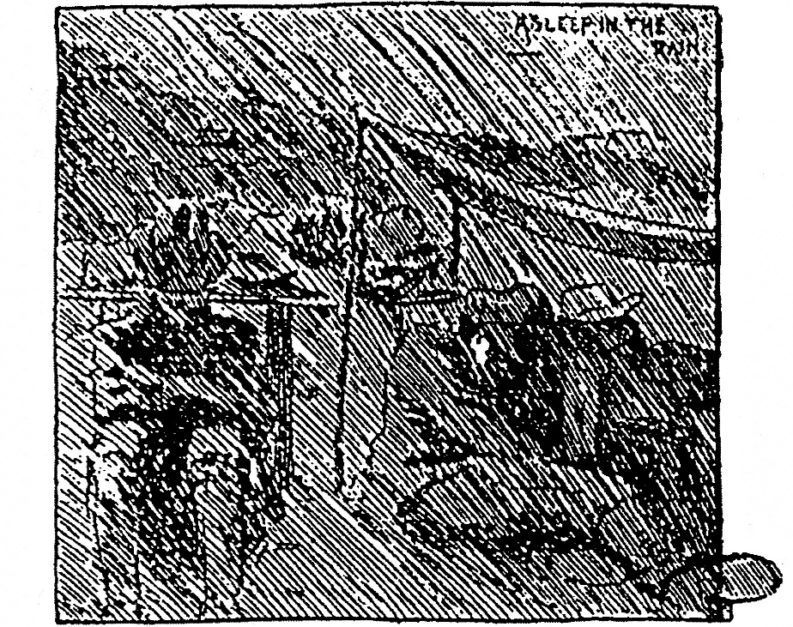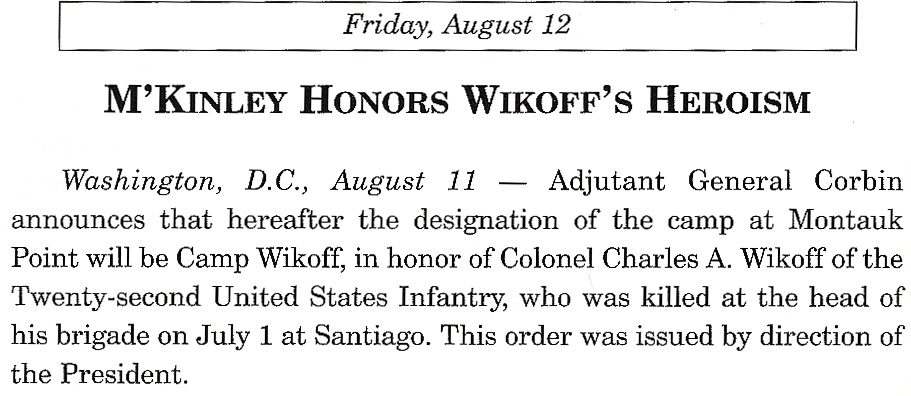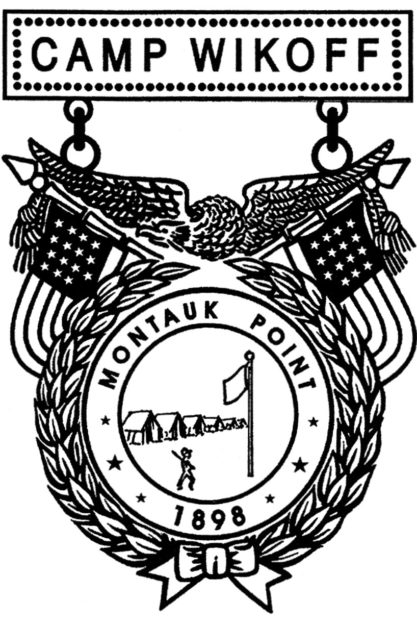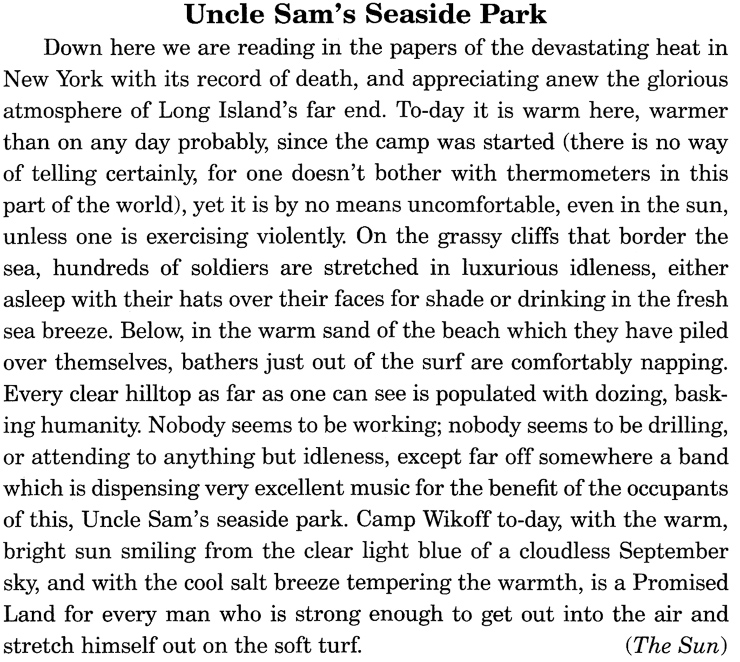SPANISH-AMERICAN WAR
April 21 / August 12, 1898
Treaty of Paris, December 10, 1898
—————
End of Spanish Empire after 400 years of colonial rule,
creating a crisis – known as Generation 98 – in Spain.
———————————————-
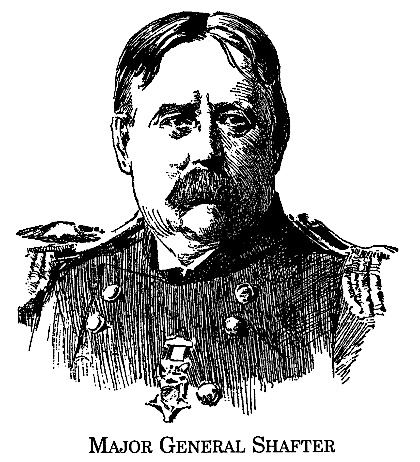

— Report, Brooklyn Daily Eagle, July 26, 1898 – Illustration, New York Herald.
———————————————-

———————————————-
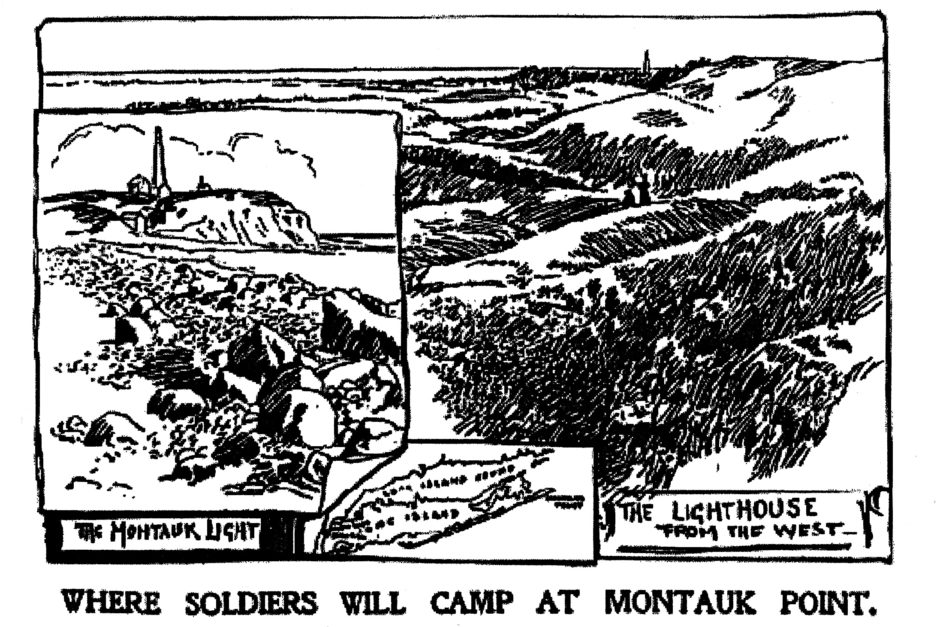
— Chicago Tribune, August 7, 1898.
———————————————-
PROTEST OF WAR DEPARTMENT ORDER
TO MOVE THE FIFTH ARMY CORPS,
BY TRAIN, TO SAN LUIS, CUBA
~~~~~~~~~~~~~~~~~
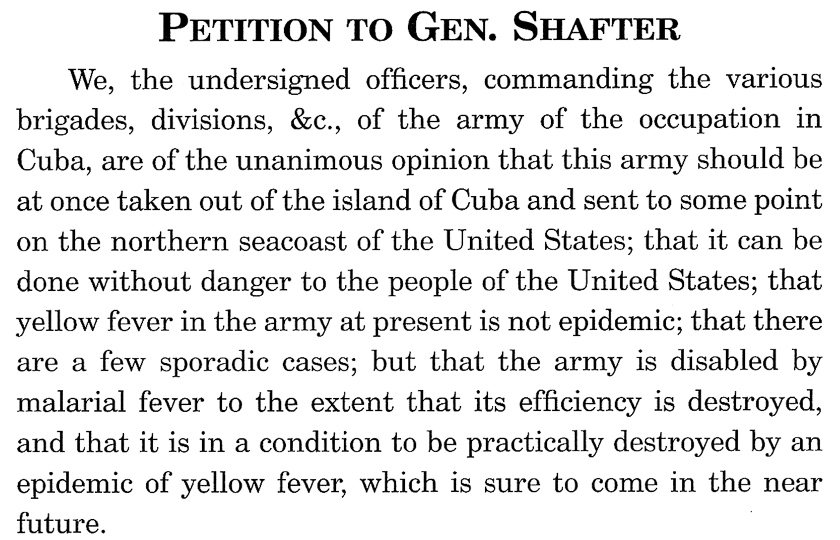
–– Round Robin Letter, signed by Officers of the Fifth Army Corps, Cuba, August 3, 1898.
Published nationally August 4, 1898.
———————————————-

~~~~~~~~~~~~~~~
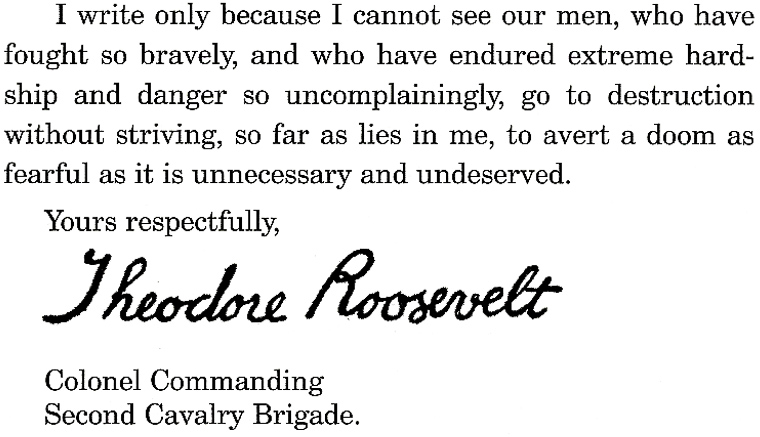
–– Round Robin Letter, accompanying above document,
signed by Col. Theodore Roosevelt, Cuba, August 3, 1898.
Published on front page nationally, August 4, 1898.
———————————————-
TO SAVE THE ARMY
General Shafter’s Corps
Ordered To Montauk Point
WAR DEPARTMENT, August 4, 1898
The Secretary of War has ordered Gen. Shafter’s troops relieved from further duty in Santiago as fast as transportation can be provided….
Transports now at Santiago – Catania, 800 men; Gate City, 600 men; Grand Duchess, 1,200 men; Miami, 900 men; Mattewan, 720 men; Vigilancia, 800 men; Olivette, 500 men; Berkshire, 250 men: total 5,770 men.
These will sail for New York as fast as the men can be comfortably embarked. The rest at Montauk Point will prepare these seasoned troops for the campaign against Havana. The first transport left Santiago yesterday. The movement is expected to be completed by the 20th of the month…
— The Sun, August 5, 1898
———————————————-
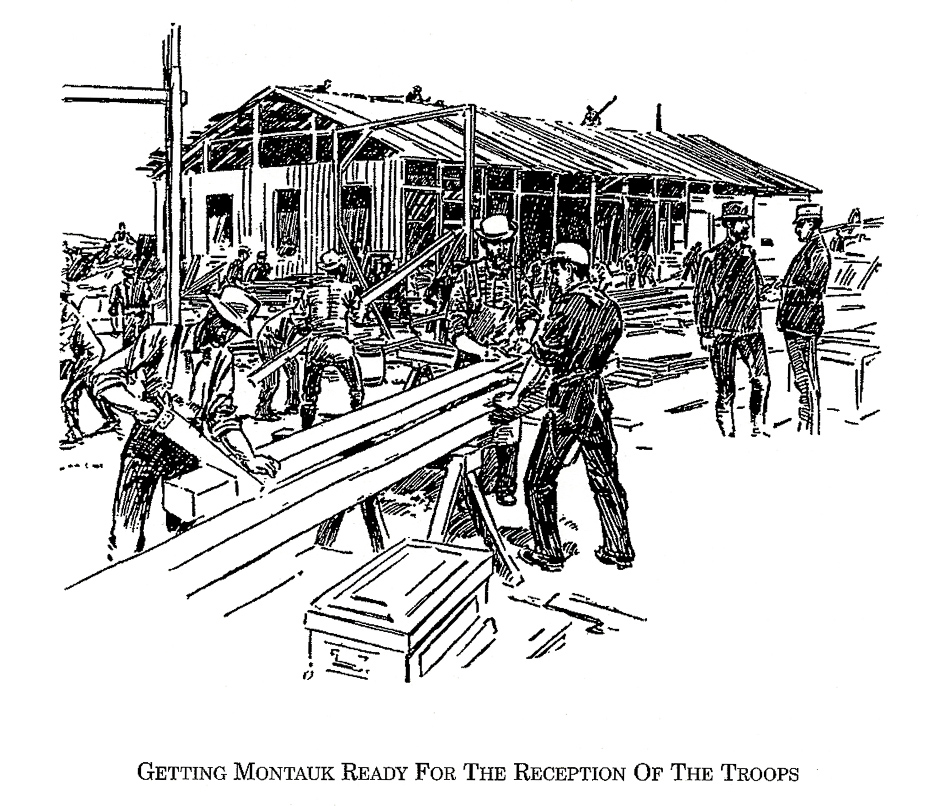
— New York Herald
———————————————-


— The Sun, August 9, 1898
———————————————-

Six hundred members of the Sixth United States Cavalry arrived from Fernandina, Florida, and were at once transferred to the newly created tent city which for some time will be their home. With their arrival, the camp at the Point was formally opened.
– Report, New York Times— Illustration, The World, August 9, 1898.
———————————————-
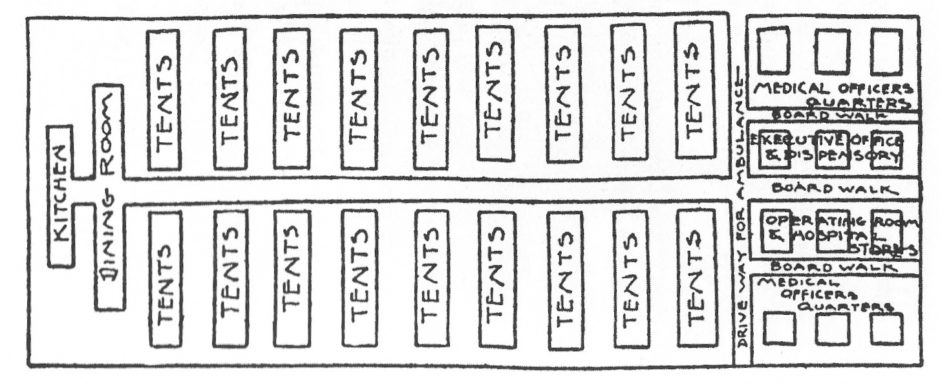

— Illustration, The World – Report, New York Times, August 9, 1898.
———————————————-
— ‘Asleep In The Rain’, The World, August 11, 1898.
———————————————-
— New York Press, August 11, 1898
———————————————-
———————————————-
— Harvey L. Reese, New York Press, August 12, 1898 — Illustration, New York Herald.
———————————————-

Camp Mother – Ellen Hardin Walworth, Directress-General of the Women’s National War Relief Association.
— The World, August 12, 1898
———————————————-
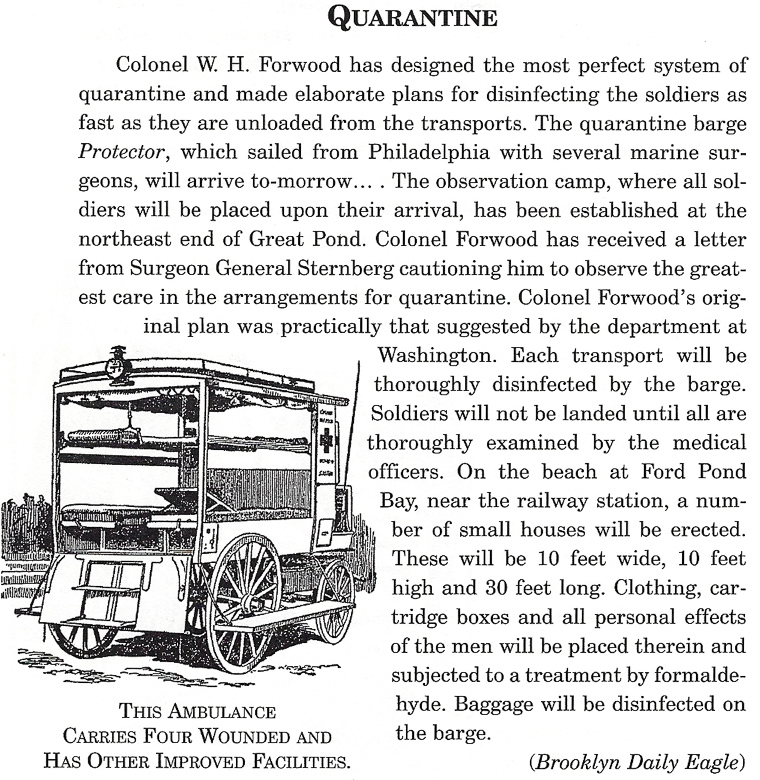
— Illustration, Washington Post, August 12, 1898.
———————————————-
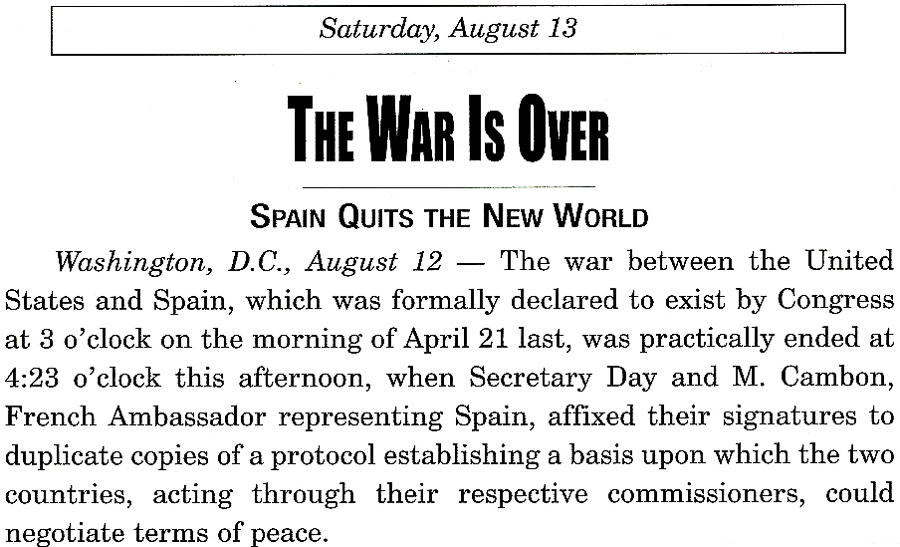
— The Sun, August 13, 1898
———————————————-

— The World, August 14, 1898.
———————————————-
America’s first veterans of a war
fought overseas on foreign soil
— Fifth Army Corps —
Returned home to Montauk Point
from Santiago de Cuba in August & September, 1898.
———————————————-
The Veterans of Foreign Wars traces its roots to Camp Wikoff.
Thirteen soldiers of the 17th Infantry — largely in reaction to conditions at Camp Wikoff — formed the American Veterans of Foreign Service in 1899, which became the Veterans of Foreign Wars in 1914.
———————————————-

— Editorial, Brooklyn Daily Eagle, August 13, 1898 – Illustration, Boston Globe.
———————————————-
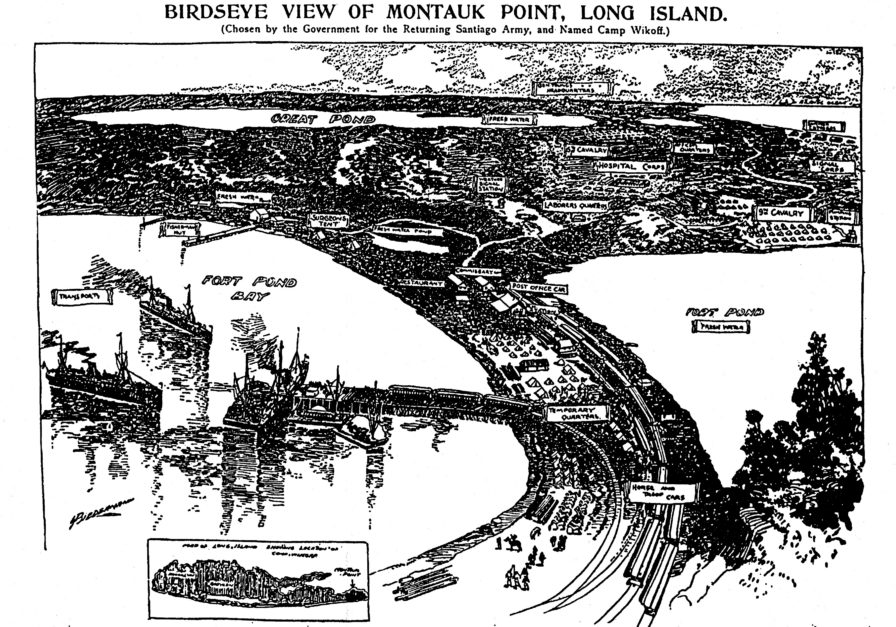
—The World, August 15, 1898.
———————————————-

— The World, August 15, 1898.
———————————————-
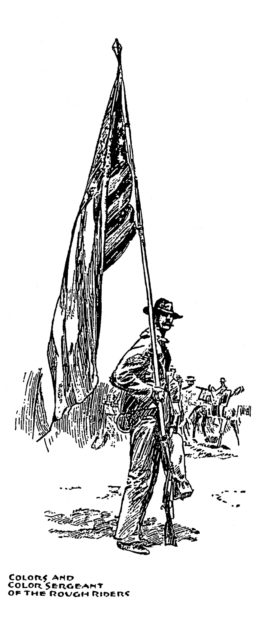

— New York Herald, August 16, 1898.
———————————————-
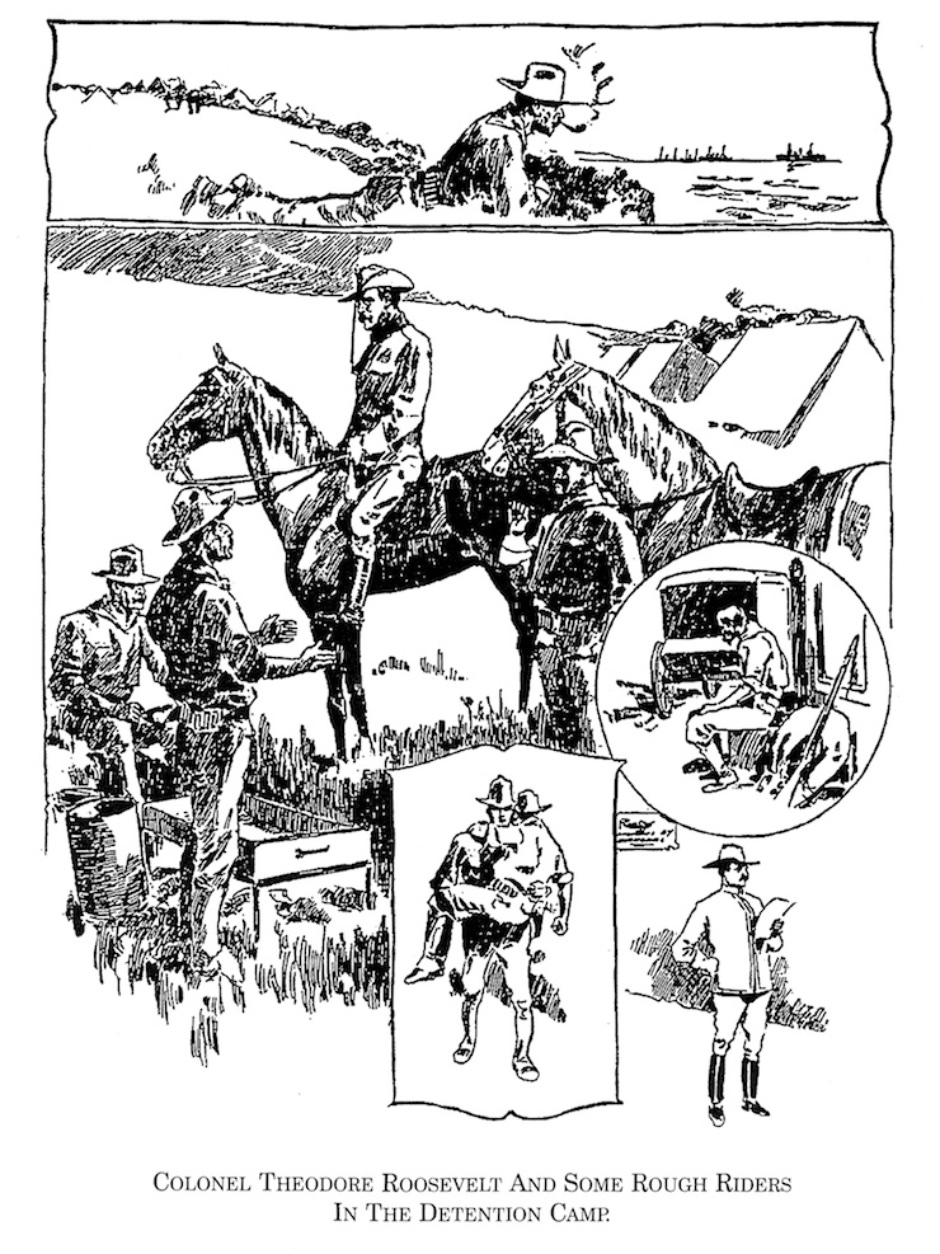
— The World, August 18, 1898.
———————————————-

— Illustration of Third House, New York Herald — Report, New York Times, August 19, 1898.
[NOTE: Colonel Theodore Roosevelt stayed overnight at Third House on August 18 & may have stayed there on August 19, before leaving on the 20th on a four-day furlough to Sagamore Hill, his home in Oyster Bay. His wife, Edith, and their daughters, Alice & Ethel, stayed at Third House on September 8th; their sons, Theodore & Kermit, stayed with the Colonel in his tent at the Rough Rider campsite. The family lunched on the 7th & 8th at Third House.]
———————————————-

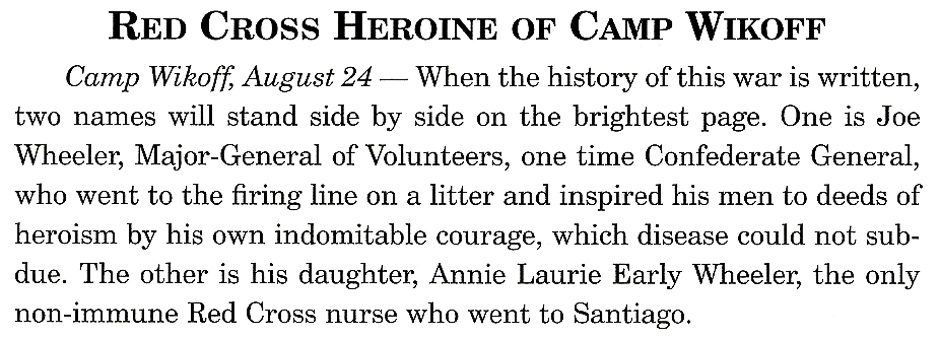
— Report, The World, August 24, 1898 – Annie Wheeler illustration.
———————————————-
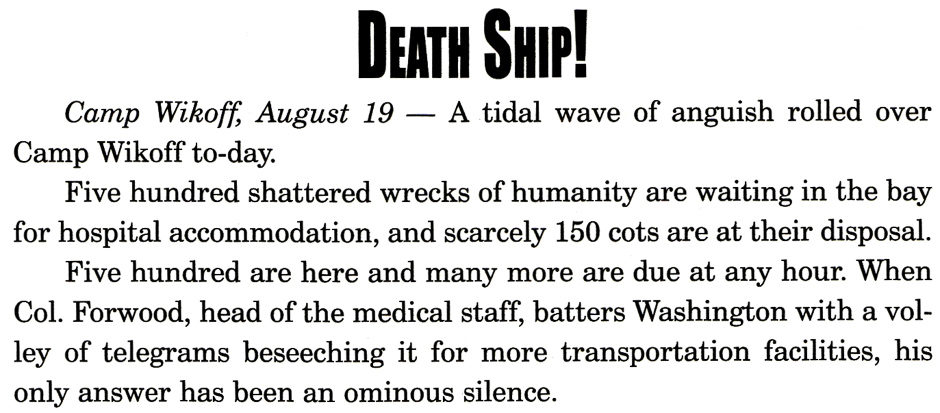
Mobile w/ 1,600 men on board – 300 sick
Seneca w/ 146 men on board – 73 sick
Comanche w/ 488 men on board – 114 sick
— The World, August 20, 1898.
———————————————-
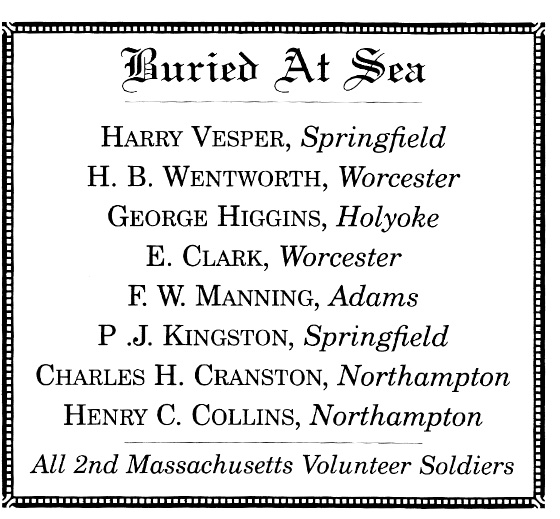
———————————————-

— The World, August 23, 1898.
———————————————-

— Commercial Advertiser, August 24, 1898.
———————————————-

— The Sun.
———————————————-

Member of the Knickerbocker Club, grandnephew of Commodore Perry, nephew of August Belmont.
Lieutenant Tiffany died in Boston. The hospital ship Olivette, en route from Santiago de Cuba, had been delayed six hours, awaiting provisions for the trip to Boston.
———————————————-

— Editorial, Kansas City Star, August 26, 1898 – Illustration, The World.
———————————————-
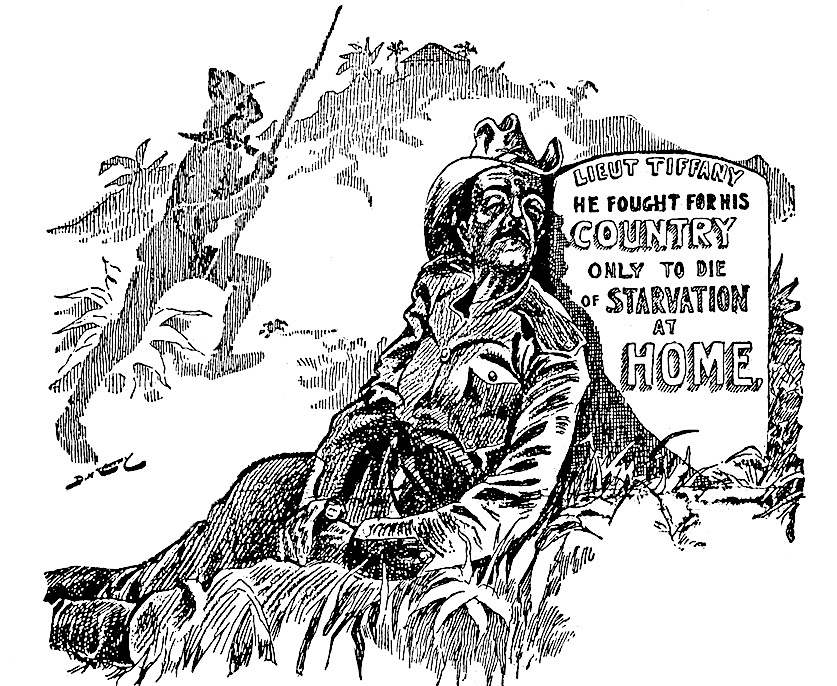
———————————————-

— The Sun, August 26, 1898.
———————————————-
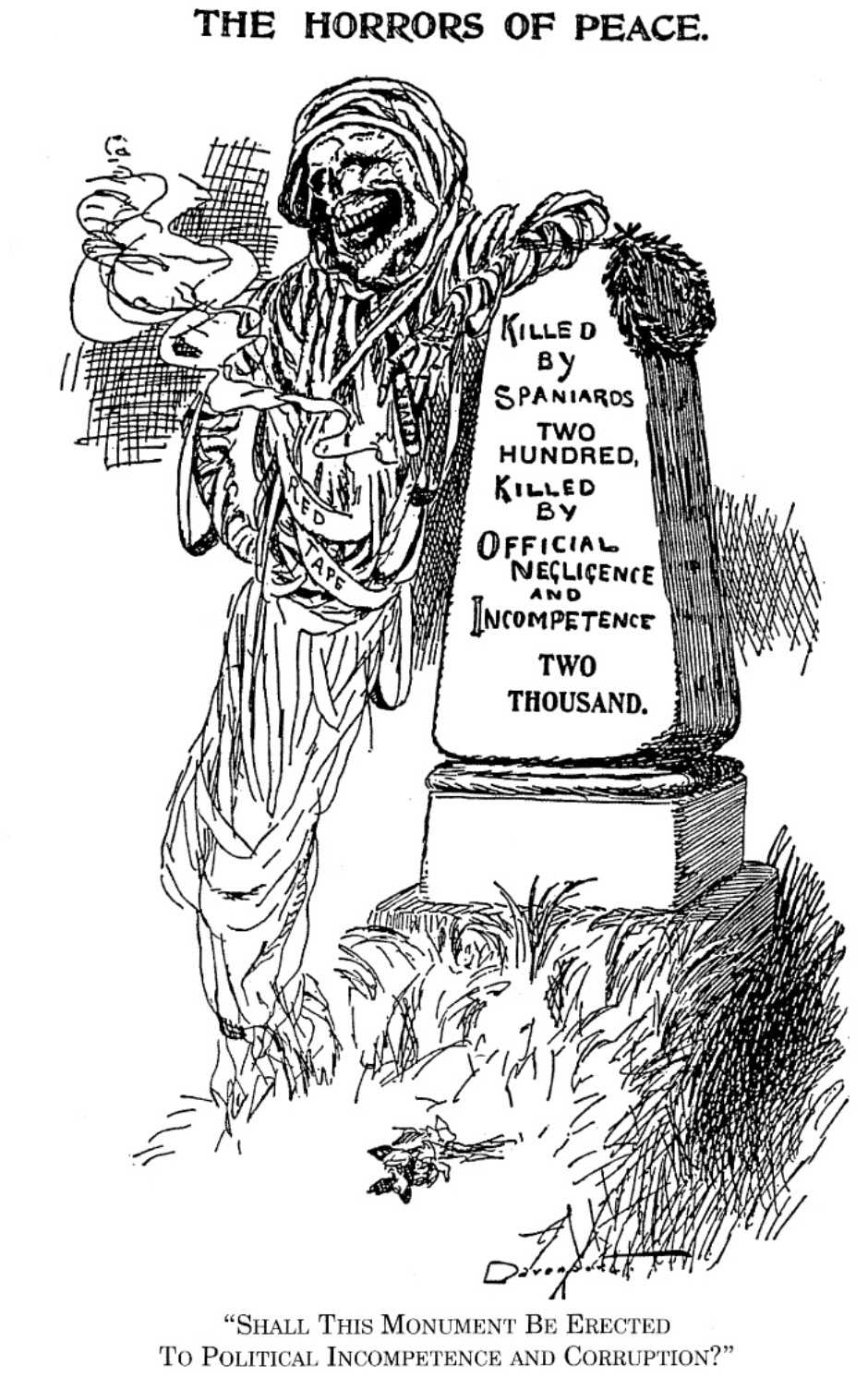
— Homer Davenport, New York Journal, August 26, 1898.
———————————————-
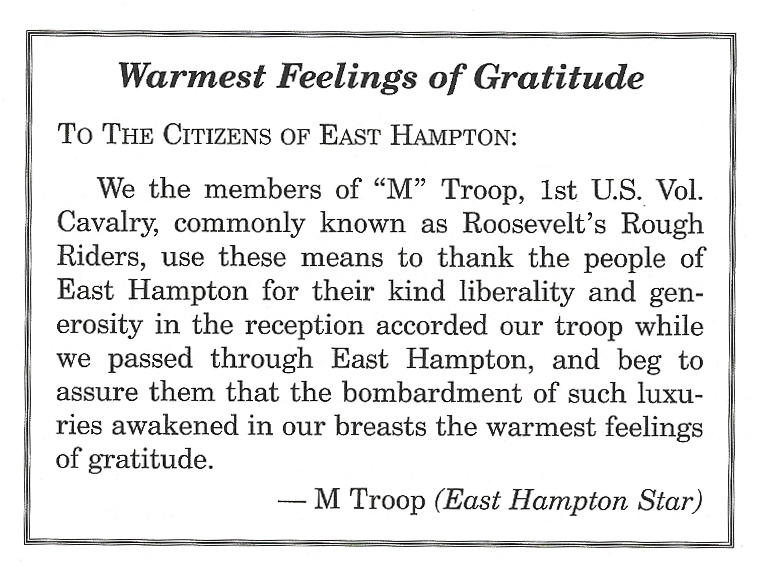
— August 26, 1898.
———————————————-
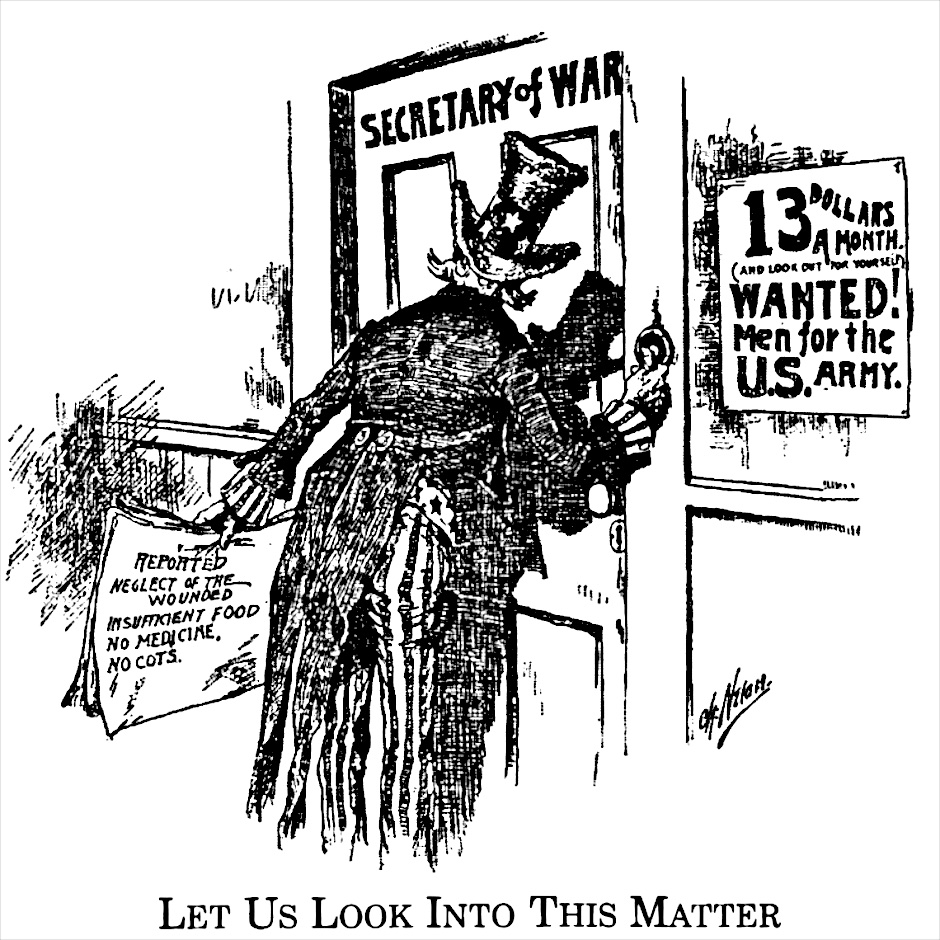
— Charles Nelan, Illustrator, New York Herald, August 27, 1898.
———————————————-
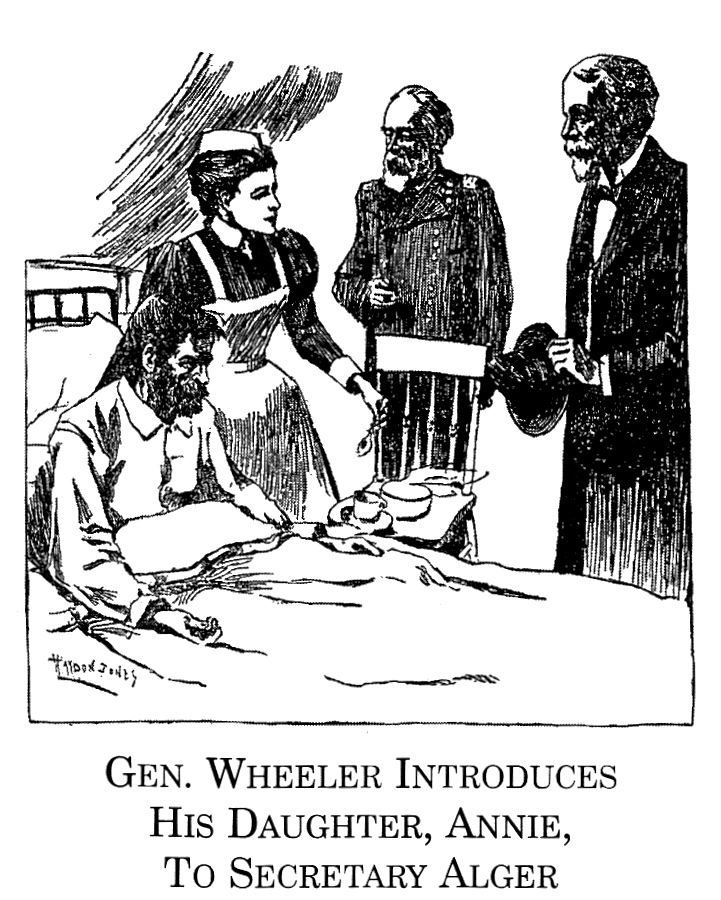
— Haydon Jones, The World, August 26, 1898.
———————————————-
Mr. Alger’s View of Camp Wikoff

— New York Herald, August 27, 1898.
———————————————-
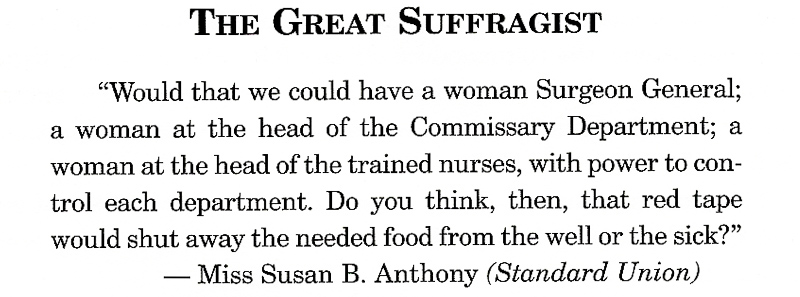
— August 27, 1898.
———————————————-
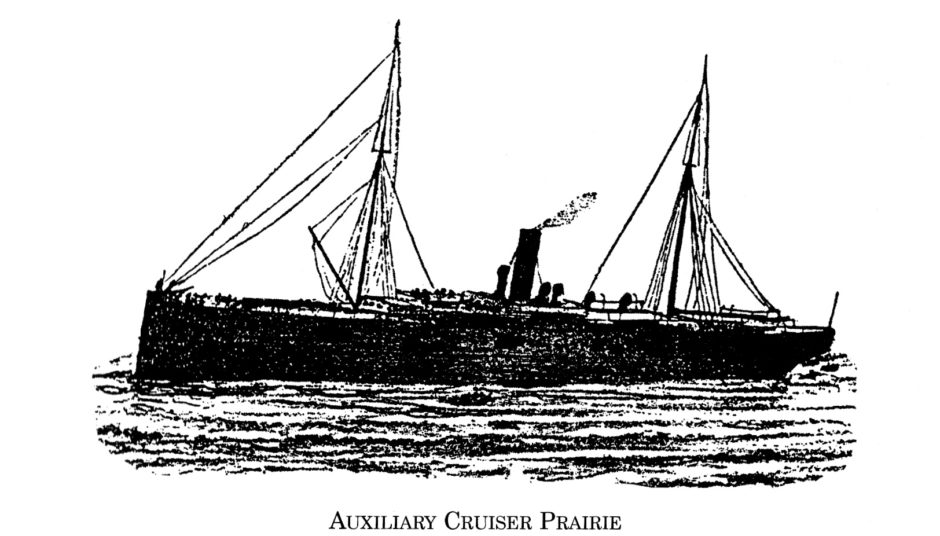
~~~~~~~~~~~~~~
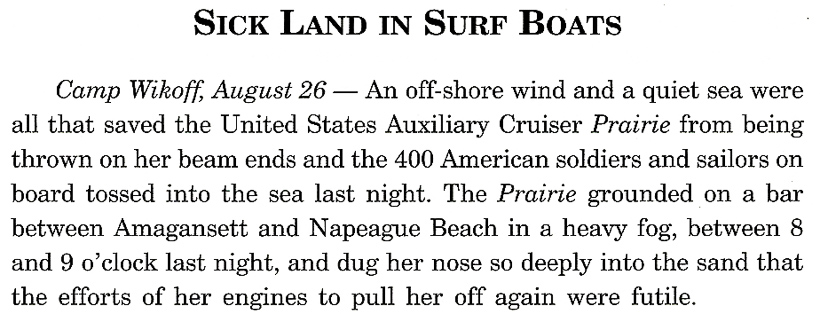

— Report, The Sun, August 27, 1898 – Illustration, New York Journal.
———————————————-
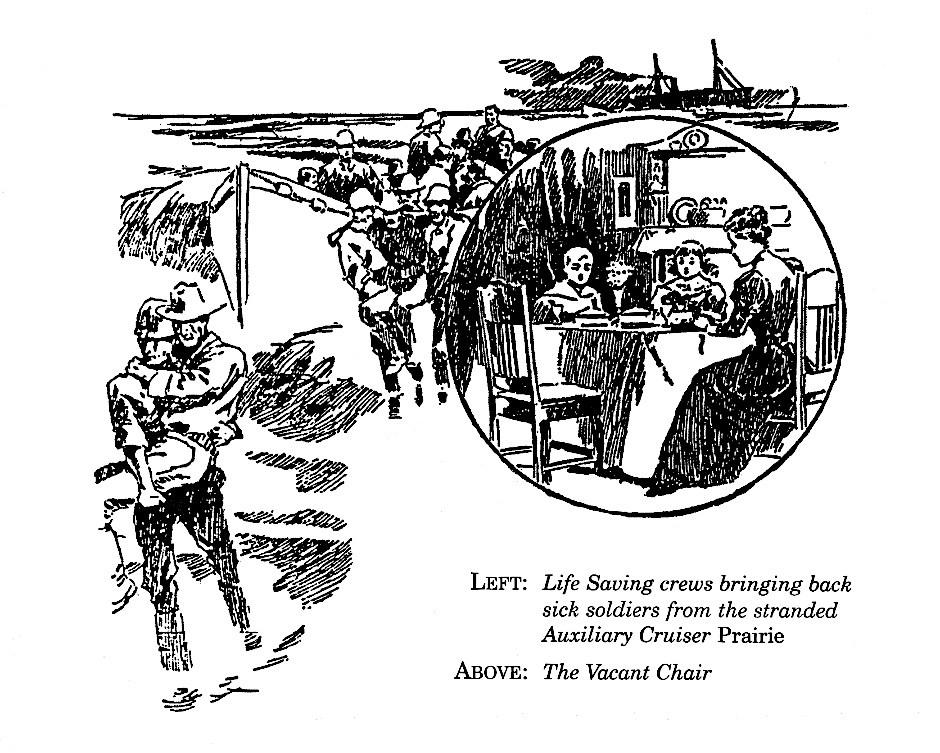
— The World, August 27, 1898..
———————————————-
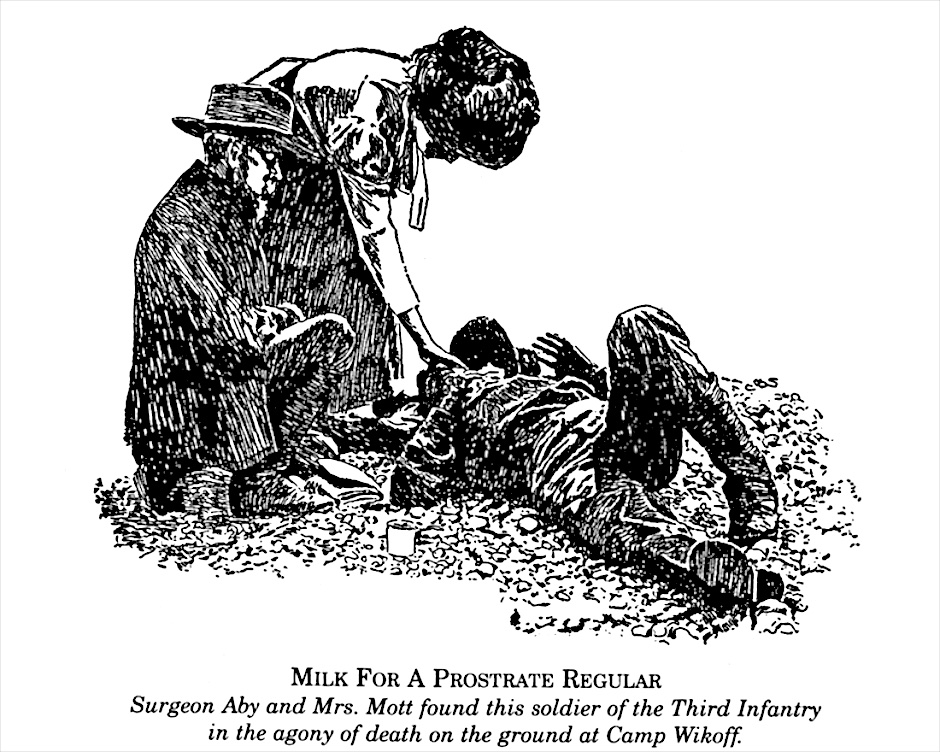
— Haydon Jones, Illustrator, The World, August 27, 1898.
———————————————-

— J. Campbell Cory, Illustrator, The World, August 28, 1898.
———————————————-
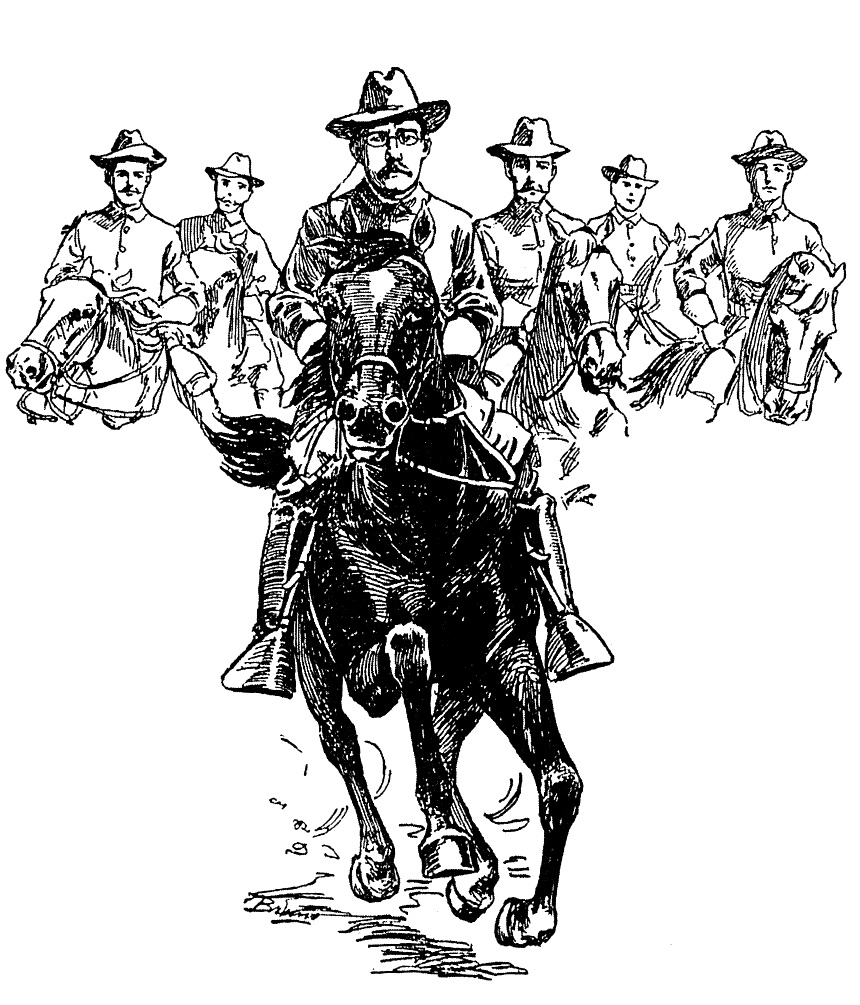
ROUGH RIDERS AT PLAY
— The World, August 28, 1898
———————————————-
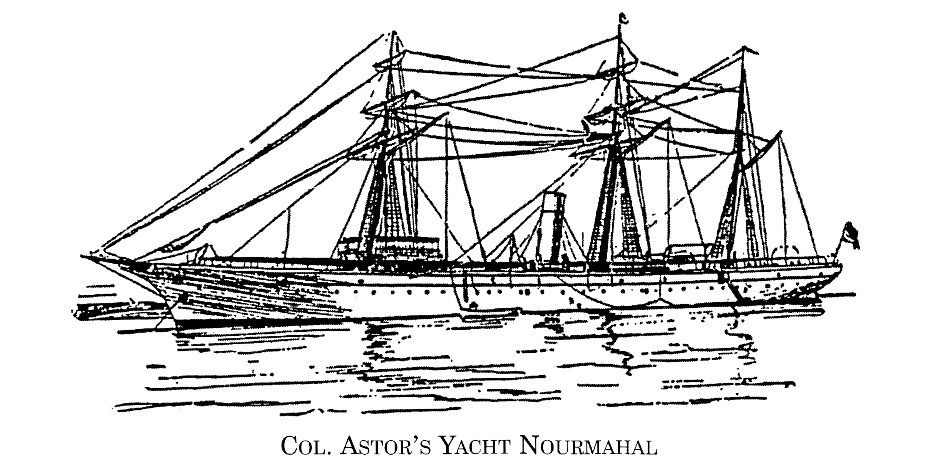
Early tomorrow morning, Colonel John Jacob Astor will go to Montauk Point on his yacht Nourmahal, with the choicest delicacies and needed food. The value of the supplies is over $ 3,000. Among the subscribers were Cornelius Vanderbilt, Mrs. Victor Sorchan, Fernando Yznaga and Colonel John Jacob Astor.
— New York Times, August 28, 1898 — Illustration, New York Herald, March 25, 1898.
———————————————-

— The Sun, August 28, 1898.
———————————————-
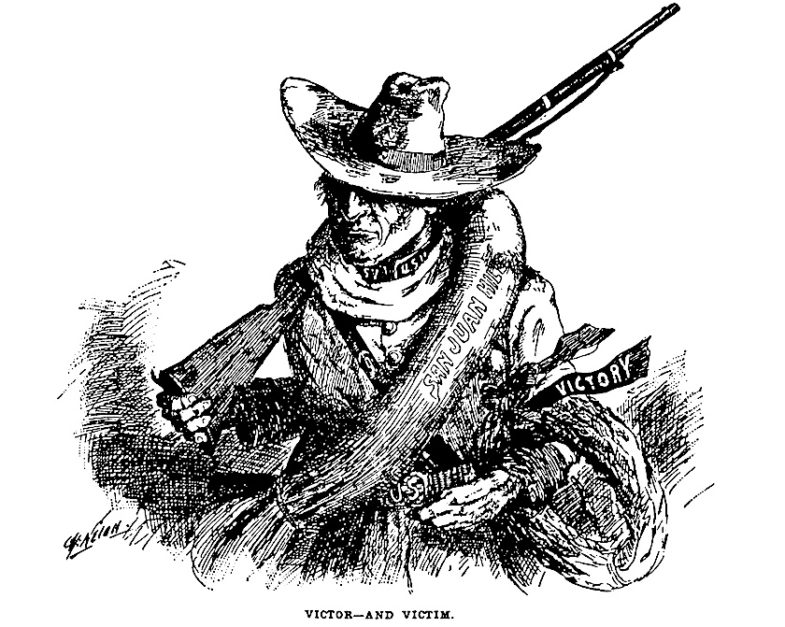
— Charles Nelan, Illustrator, New York Herald, August 28, 1898.
———————————————-

— Surgeon-Major Brown, Evening Post, August 29, 1898.

— Colonel Loomis L. Langdon, New York Herald, August 29, 1898.
———————————————-

— Homer Davenport, Illustrator, New York Journal, August 30, 1898.
———————————————-
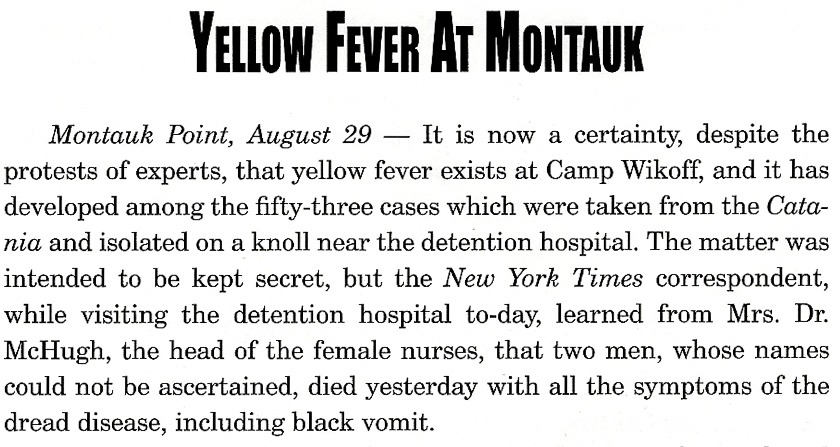
— New York Times, August 30, 1898.
———————————————-
More Men Killed By Spoils System
Than By Spanish Bullets
Editorial – The spoils system is responsible for the starvation of the soldiers. It is responsible for the inadequate hospital accommodations….But why was Alger made Secretary of War? …His appointment was purely political. He was put where it was believed he could do little harm. The unexpected happened, and war came. Then inefficiency bred inefficiency. The spoils system spoiled all that it touched, as corruption multiplied corruption….
— Brooklyn Daily Eagle, August 31, 1898.
———————————————-

———————————————-

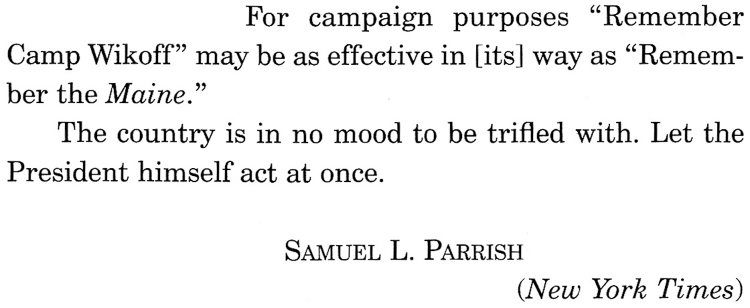
— Southampton, August 30, 1898, Published New York Times, August 31, 1898.
———————————————-
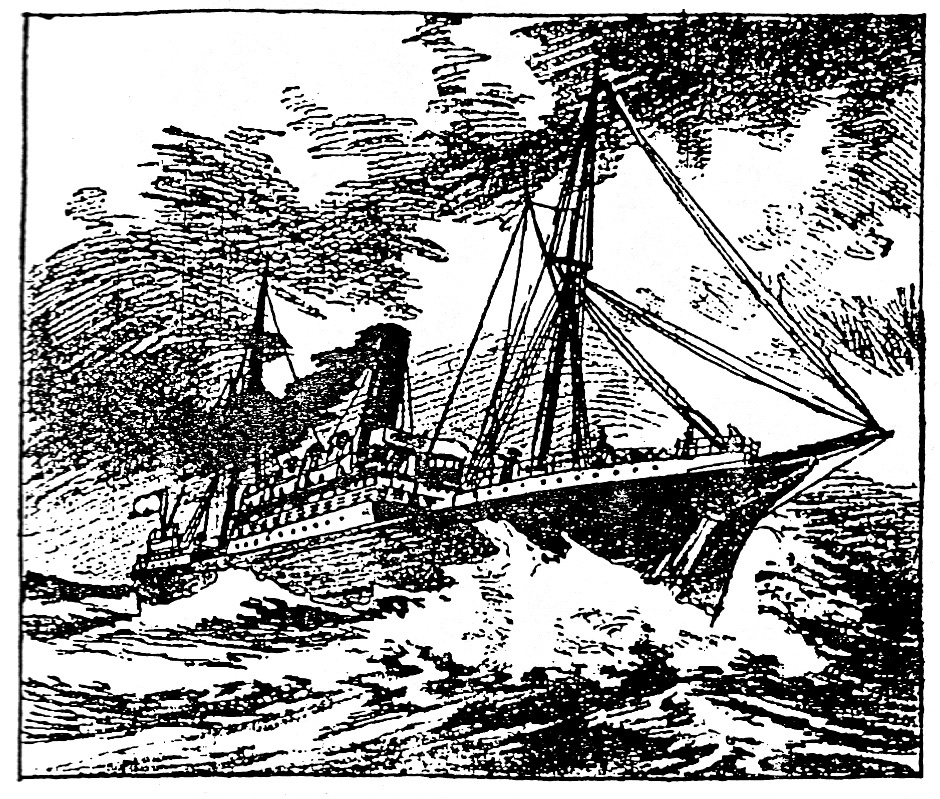
Transport Allegheny
— New York Evening Journal, August 31, 1898.
———————————————-
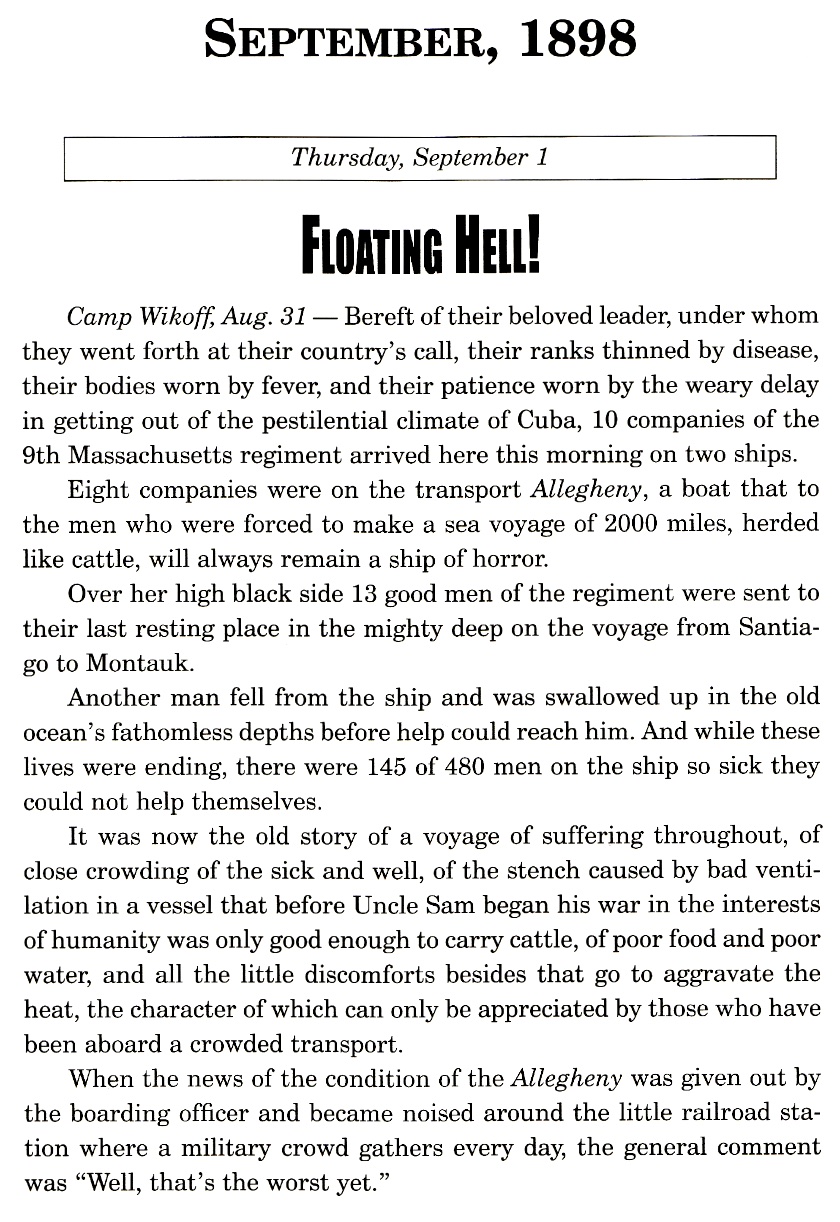
— Boston Globe, September 1, 1898.
———————————————-
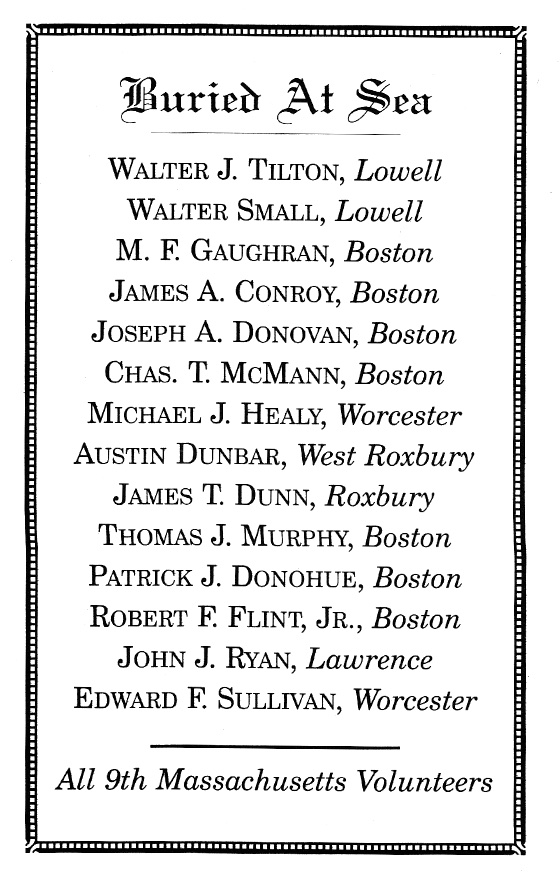
———————————————-
Buried At Sea

— New York Herald.
———————————————-
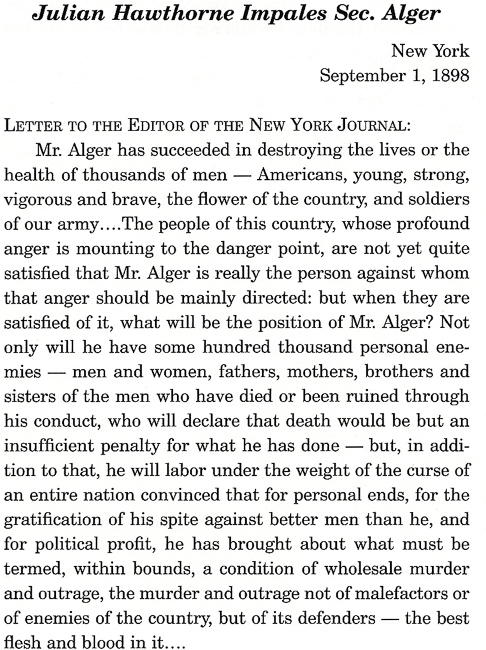
New York Journal correspondent, Julian Hawthorne, son of Nathaniel Hawthorne and father of John Hawthorne, member of the Seventy-first New York.
— New York Journal.
———————————————-

— Haydon Jones, Illustrator – The World, September 3, 1898.
———————————————-

— The World, September 3, 1898.
———————————————-

— Heyer, Illustrator, The World, September 4, 1898.
———————————————-
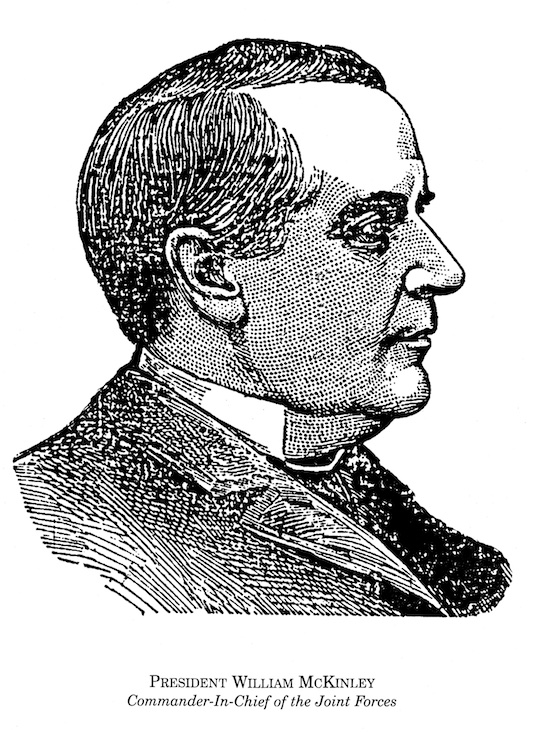
— Boston Globe, September 4, 1898.
———————————————-
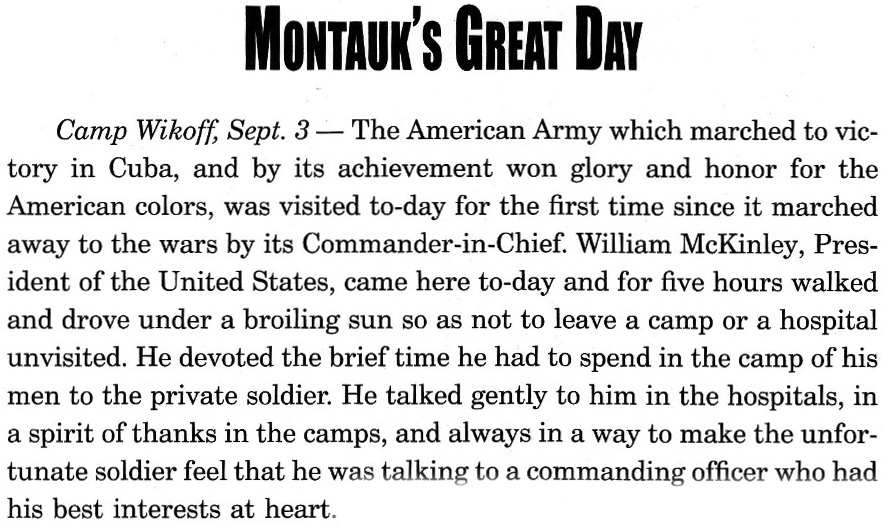
— The Sun, September 4, 1898.
———————————————-
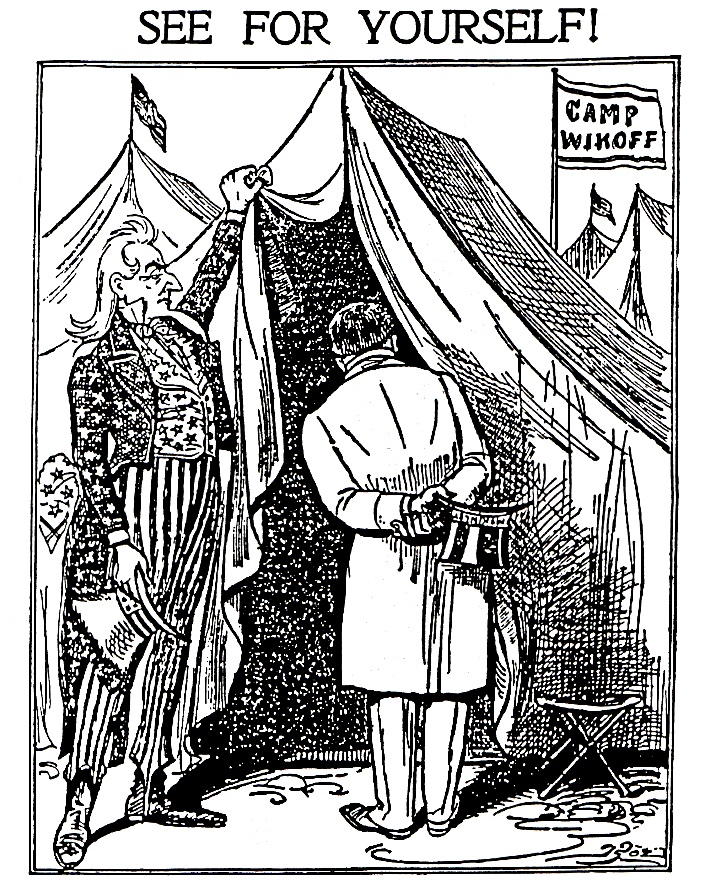
— The Boston Globe.
———————————————-
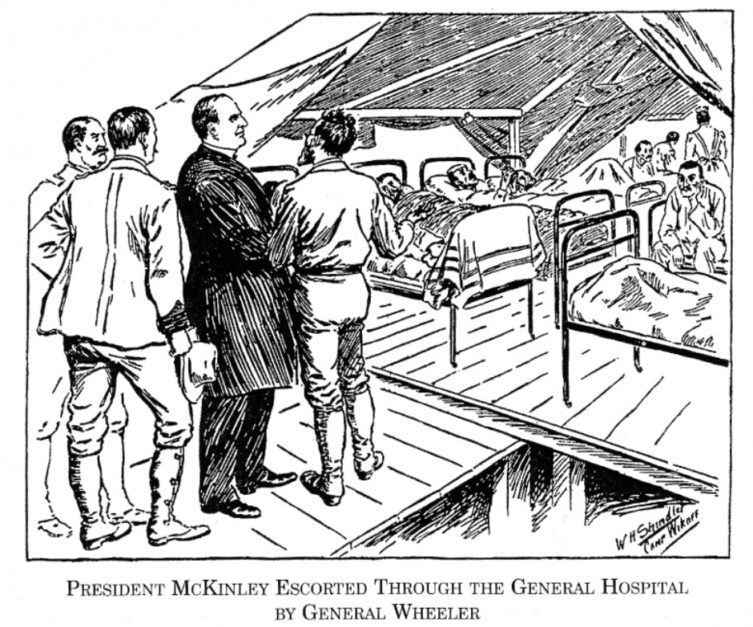
— W.H. Shindler, Illustrator, Boston Globe, September 4, 1898.
———————————————-
 Private John A. Alexander, 1st Illinois Volunteers, Calls on the President to Visit Him.
Private John A. Alexander, 1st Illinois Volunteers, Calls on the President to Visit Him.
— Robert Carter, Illustrator, The World, September 4, 1898.
———————————————-

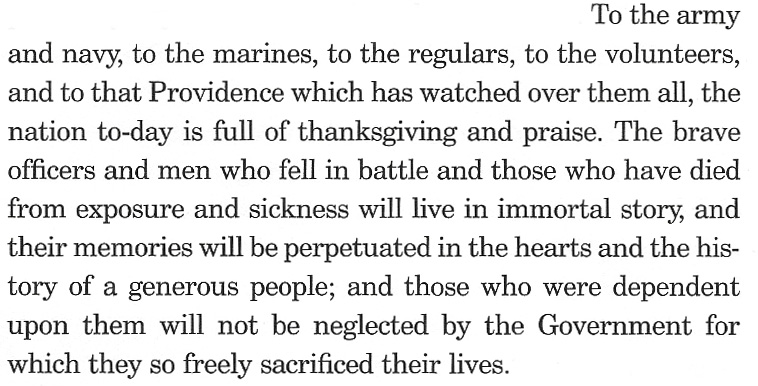
— President William McKinley, The Sun, September 4, 1898.
![]()
———————————————-

— The World, September 4, 1898.
———————————————-

— Boston Globe, September 4, 1898.
———————————————-
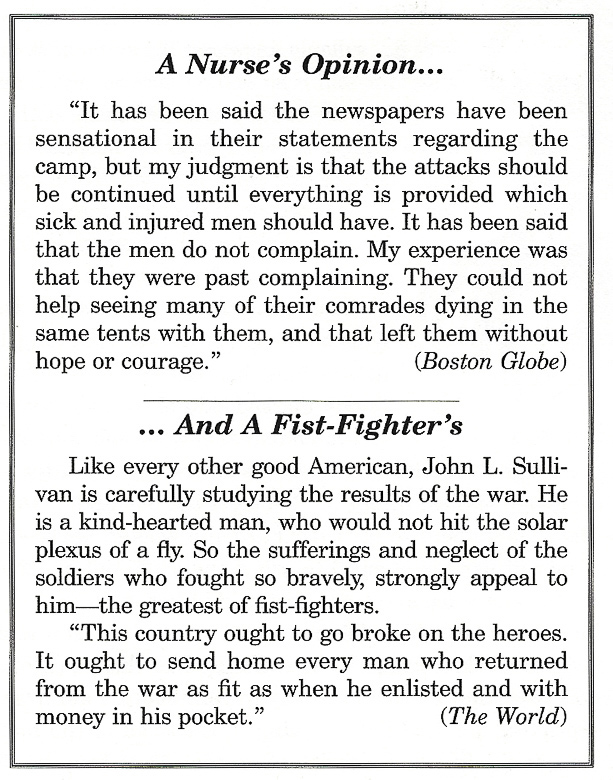
— September 4, 1898.
———————————————-
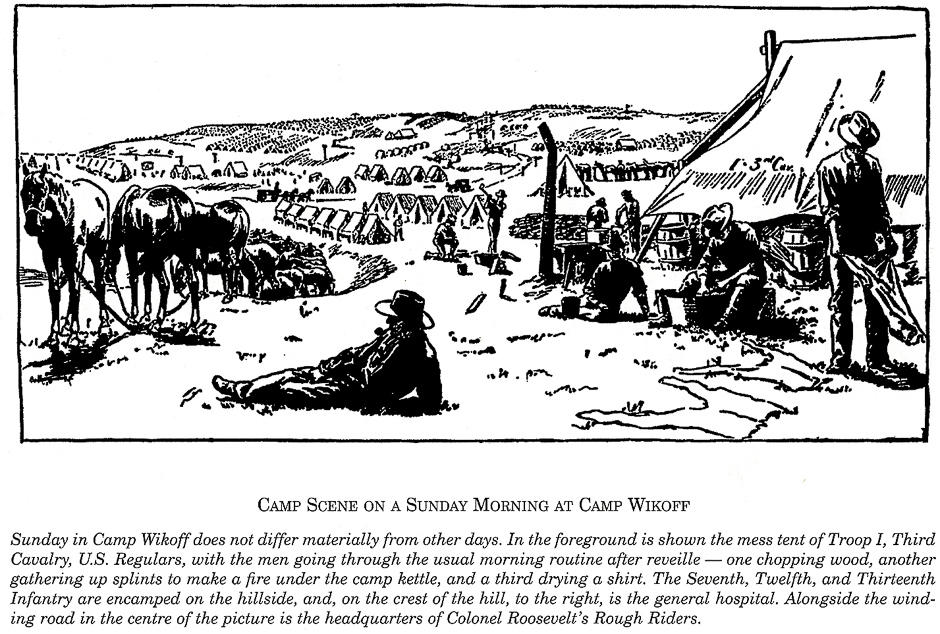
— New York Herald.
———————————————-
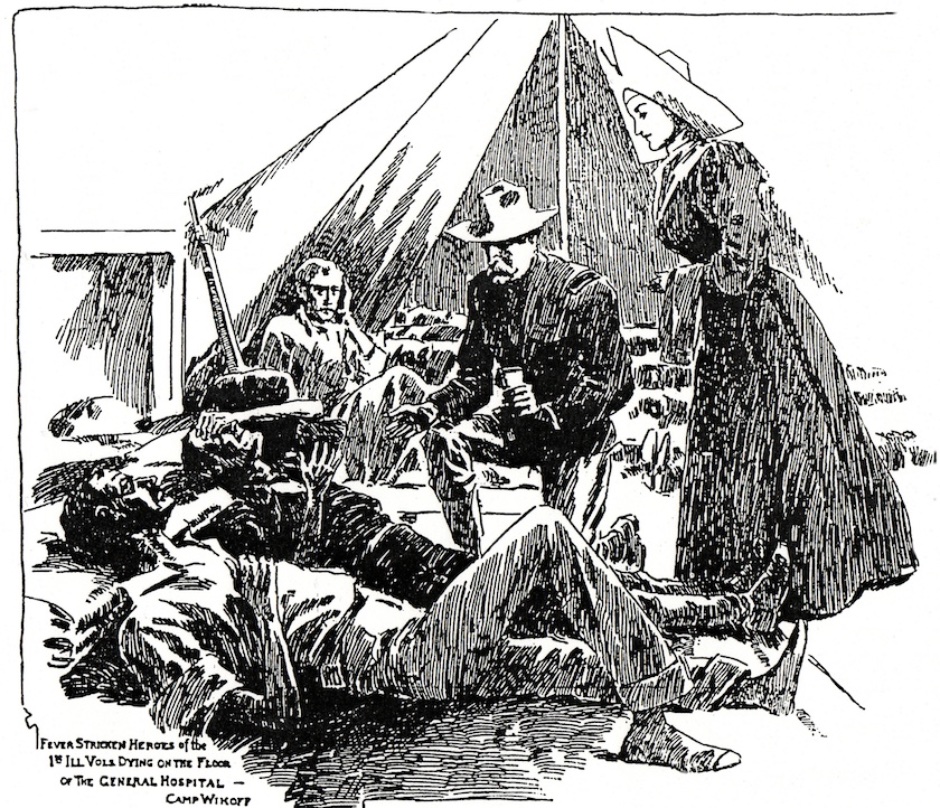
— The World, September 4, 1898.
———————————————-
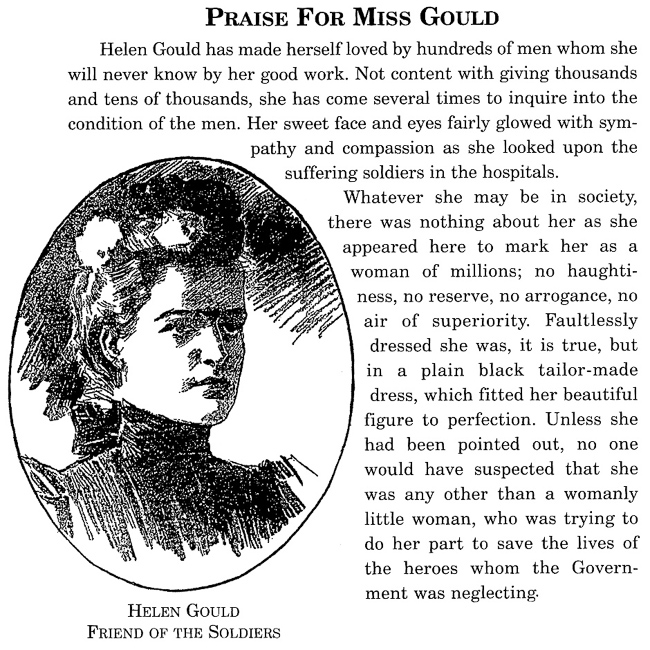
— Report, Harvey L. Reese, New York Press – Illustration, New York Journal.
———————————————-
— The Sun, September 5, 1898.
———————————————-
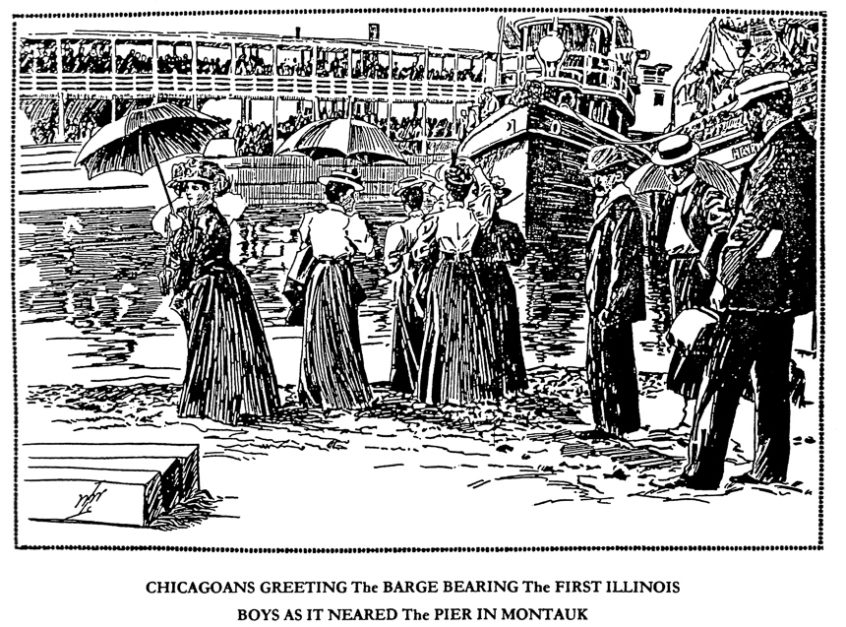
— Chicago Tribune, September 5, 1898.
———————————————-

LEAVING MONTAUK….
It is the policy of the surgeon in charge at the Cam Wikoff General Hospital to get the sick away from Montauk Point at the earliest possible time, for the reason that, as admitted candidtly recently, they are “better off anywhere than there.” …. In the eyes of the surgeons, the men who can walk to the station are “well,” though they faint when they get there; if they can get there with the help of one man, they are “well enough to go home,” if they have to be carted there, they are “well enough to try it.” …. Fifty men who should be on stretchers leave Montauk every day…They lie on their backs in the “shack” – maybe four to six hours – until they are warned that it is time to get on the train; then they rise to a sitting posture, and hang one thin arm about the neck of a comrade, who catches them tightly about the waist, rise — after, it may be, three attempts — and so fight their way to the car, swaying as they go, and are helped aboard by some kindly disposed traveler. The reporter has seen some men with their knees giving way at every step; some with their heads lolling; some half-conscious – all with ghastly faces and the emaciated bodies of men dead of consumption.
— Evening Post, September 6, 1898.
———————————————-

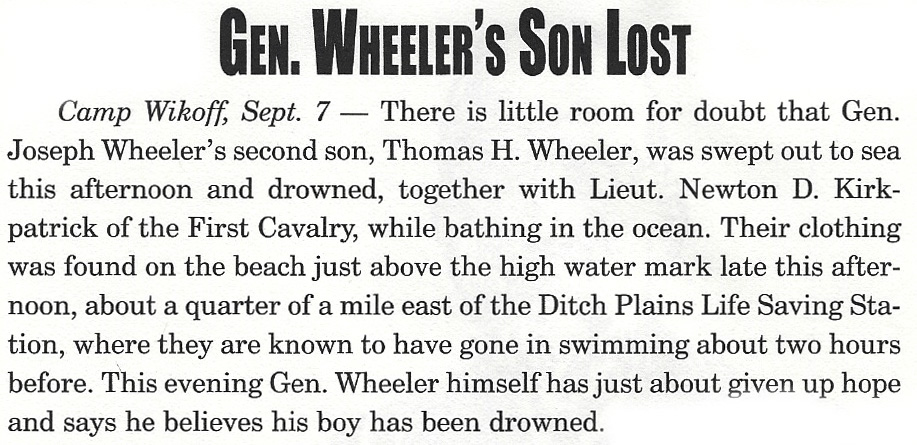
— Illustration, New York Herald — Report, The Sun.
———————————————-
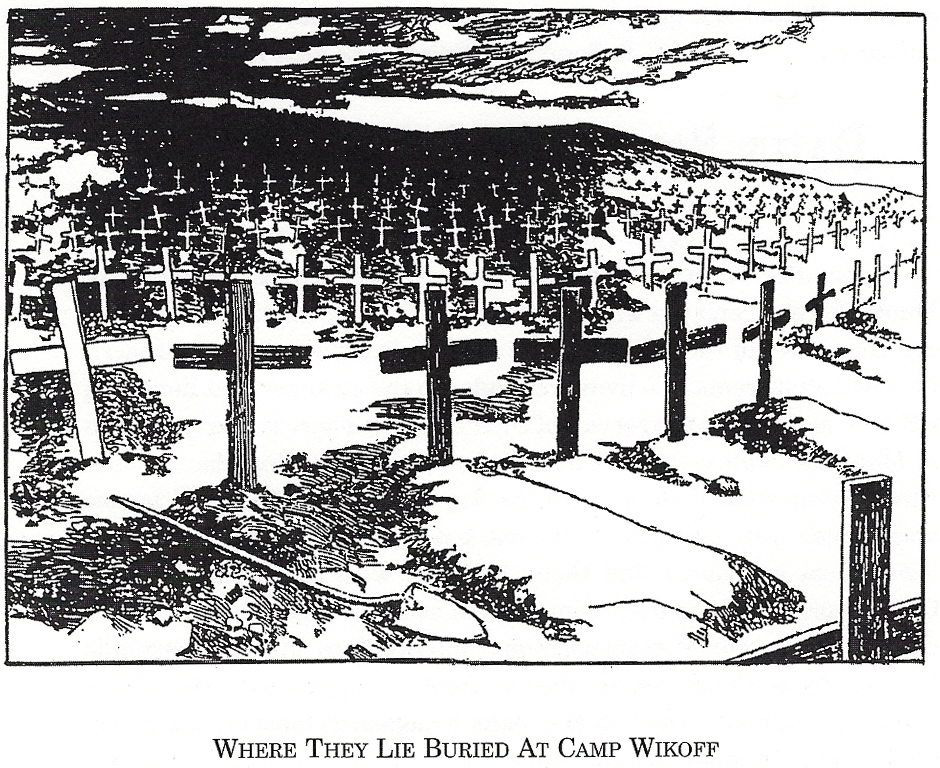
— Haydon Jones, Illustrator, The World, September 9, 1898.
———————————————-
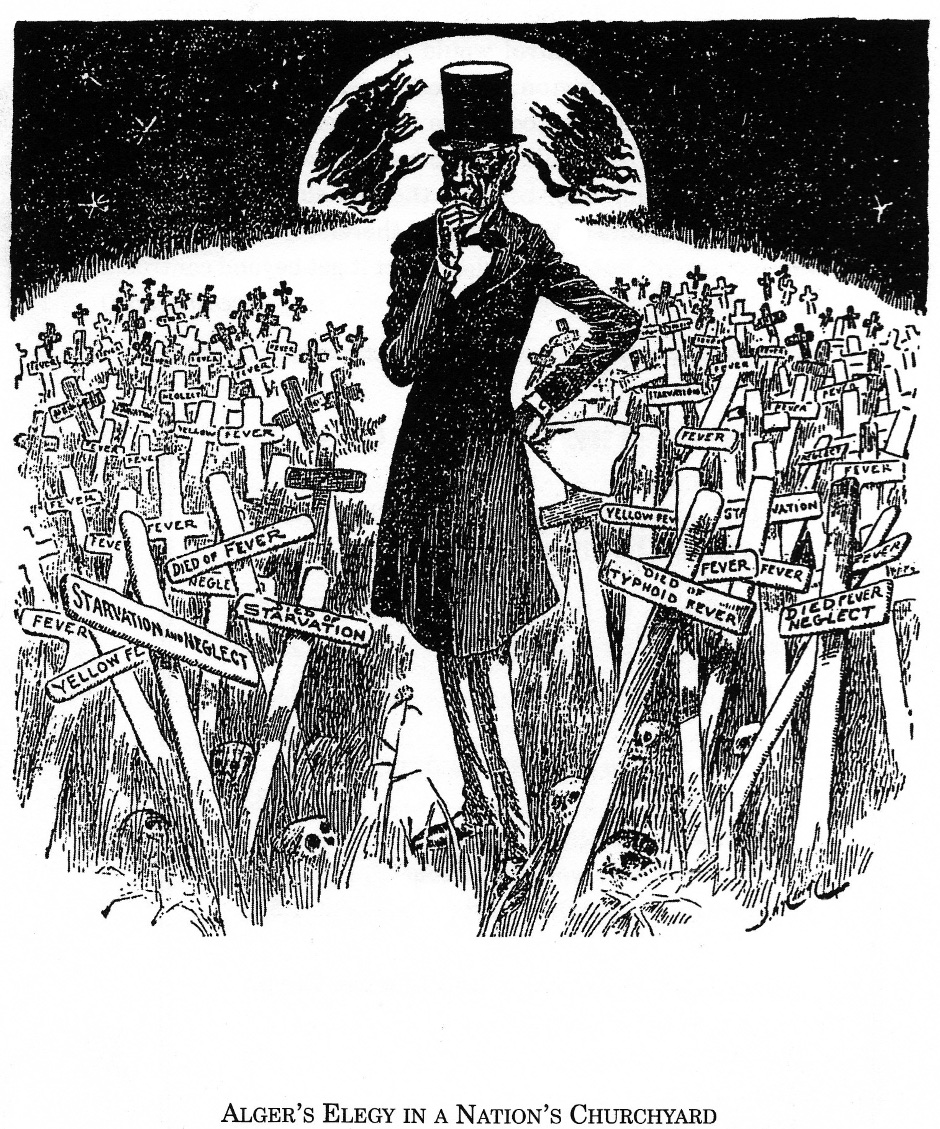
— New York Evening Journal.
———————————————-
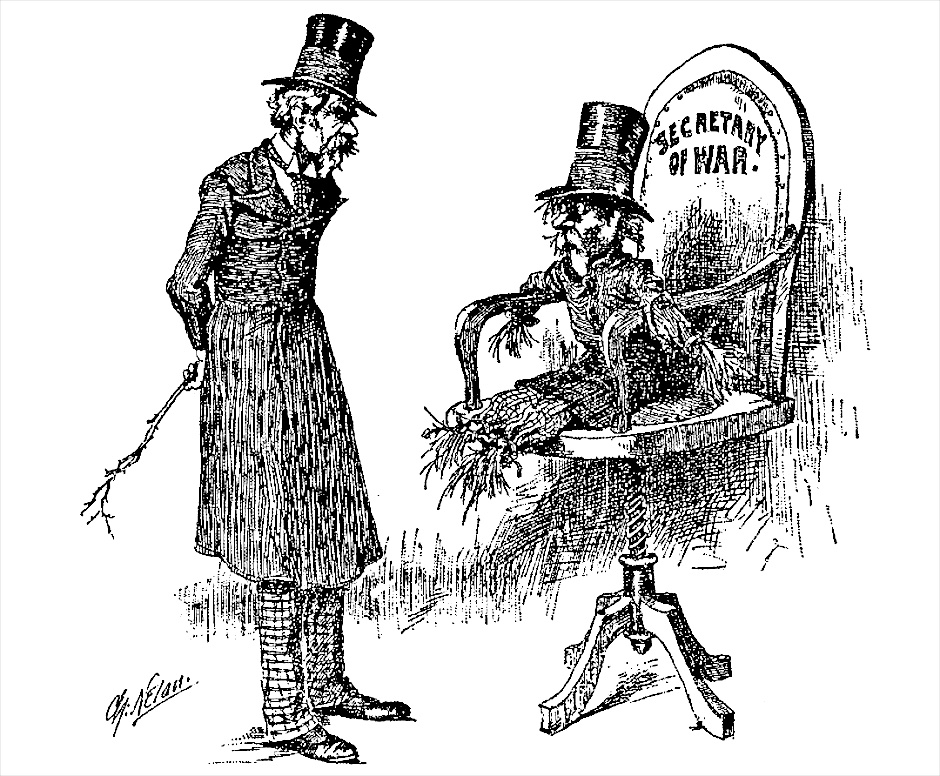
Army Scandals Will Be Probed
President McKinley has decided to grant Secretary Alger’s request for an appointment of a commission to thoroughly investigate the conduct of the war by Army officials and the management of the War Department during the existence of hostilities as well as during the period since the signing of the peace protocol.
–– Charles Nelan, Illustrator, New York Herald — Report, Brooklyn Daily Eagle, September 9, 1898.
———————————————-
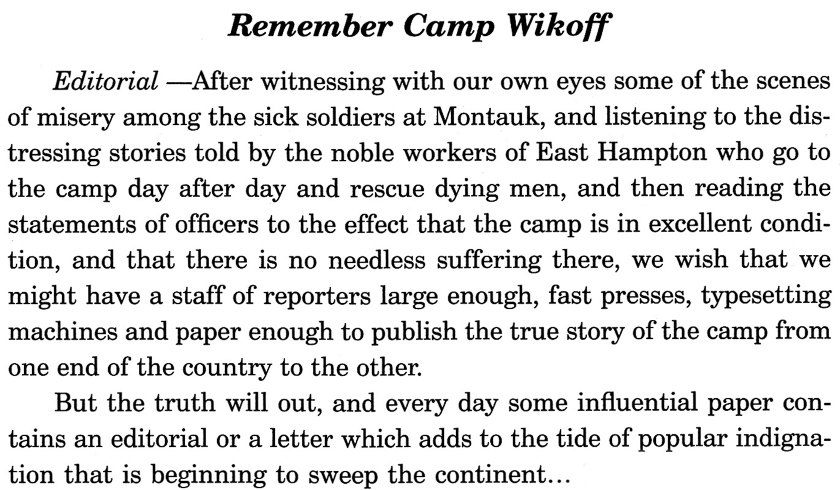
— E.S. Boughton, Editor, East Hampton Star, September 9, 1898.
———————————————-
THE REAL FAULT OF THE PRESS
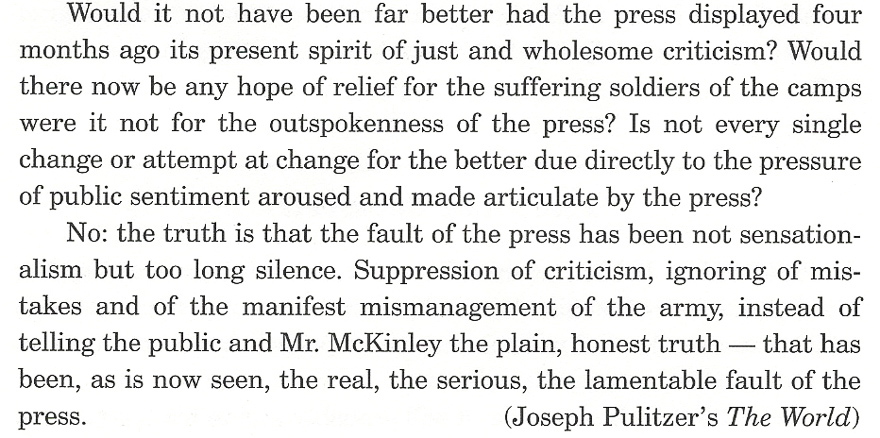
———————————————-
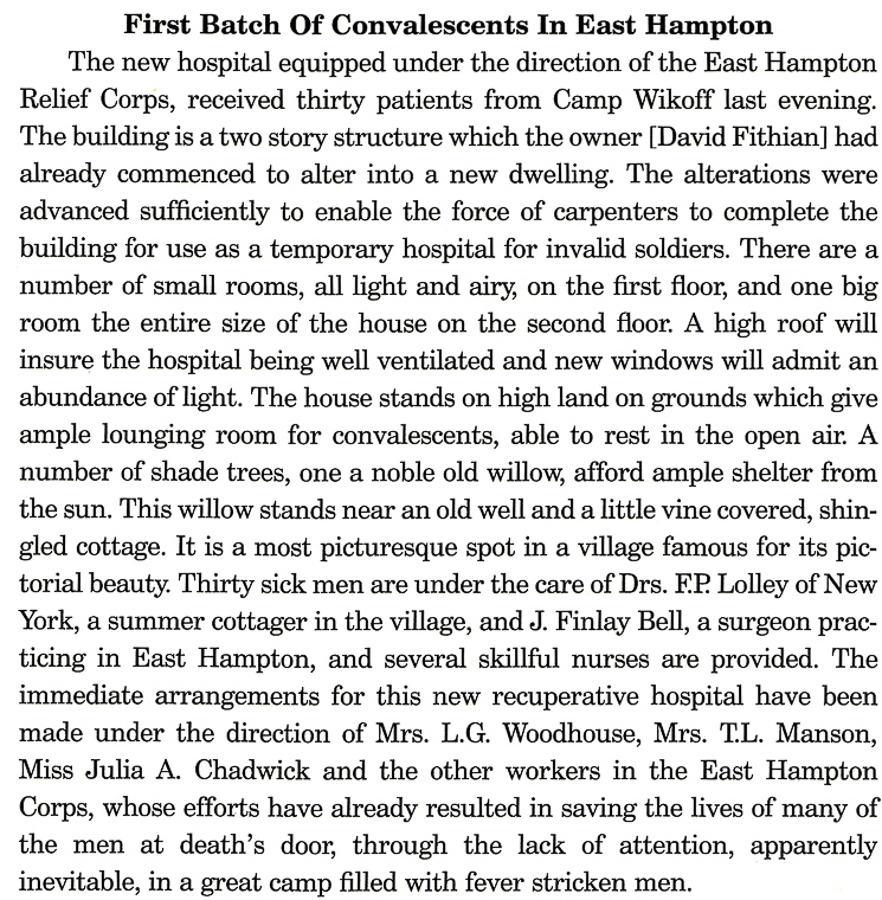
— Brooklyn Daily Eagle, September 9, 1898.
———————————————-


— Illustration, The Traveler – Report, Brooklyn Daily Eagle.
———————————————-
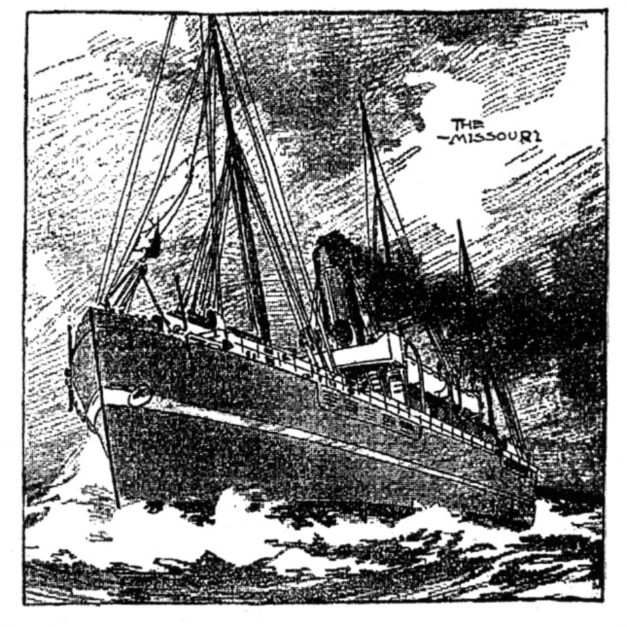

———————————————-
ROOSEVELT’S FAREWELL TO HIS MEN

“I am proud of this regiment beyond measure. I am proud of it because it is a typical American regiment. The foundation of the regiment was the cowpuncher, and we have bot him here in bronze….
“We parted with many in the fight who could ill be spared, and I think that the most vivid memories that we will take away with us will be of those whom we left under Cuban sod, and those who died in the hospitals in the United States: the men who died from wounds, and the men who, with the same devotion to country, died of disease….”
— September 13, 1898, The Sun.
———————————————-
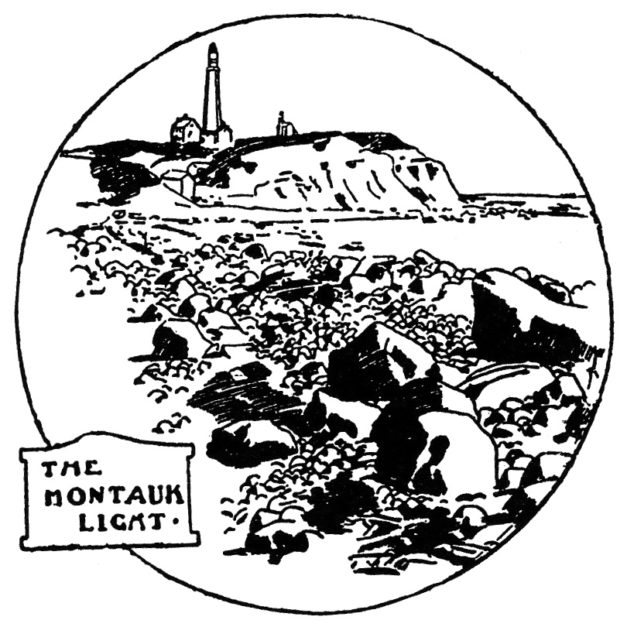
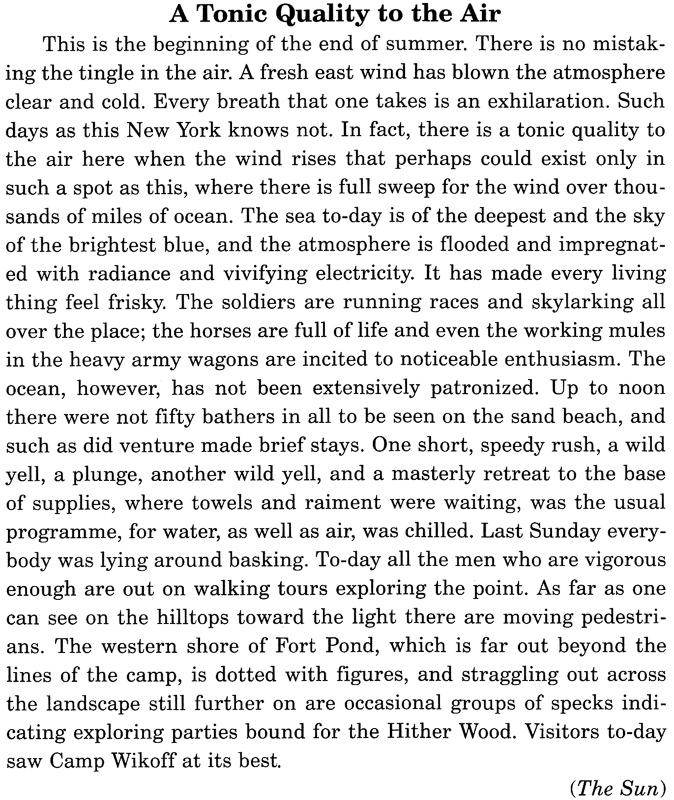
— Illustration, The World – Report, The Sun, September 14, 1898.
———————————————-
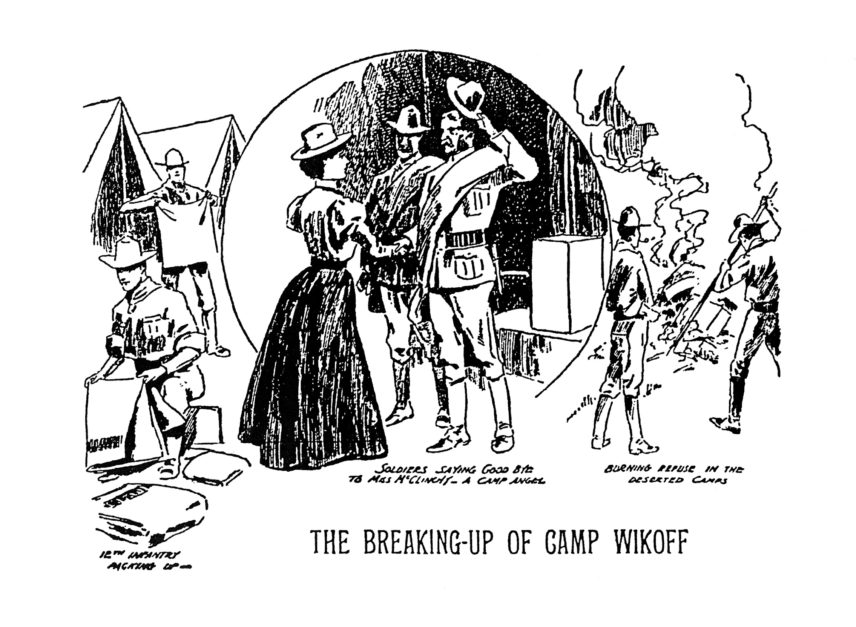
— The World, September 17, 1898.
———————————————-
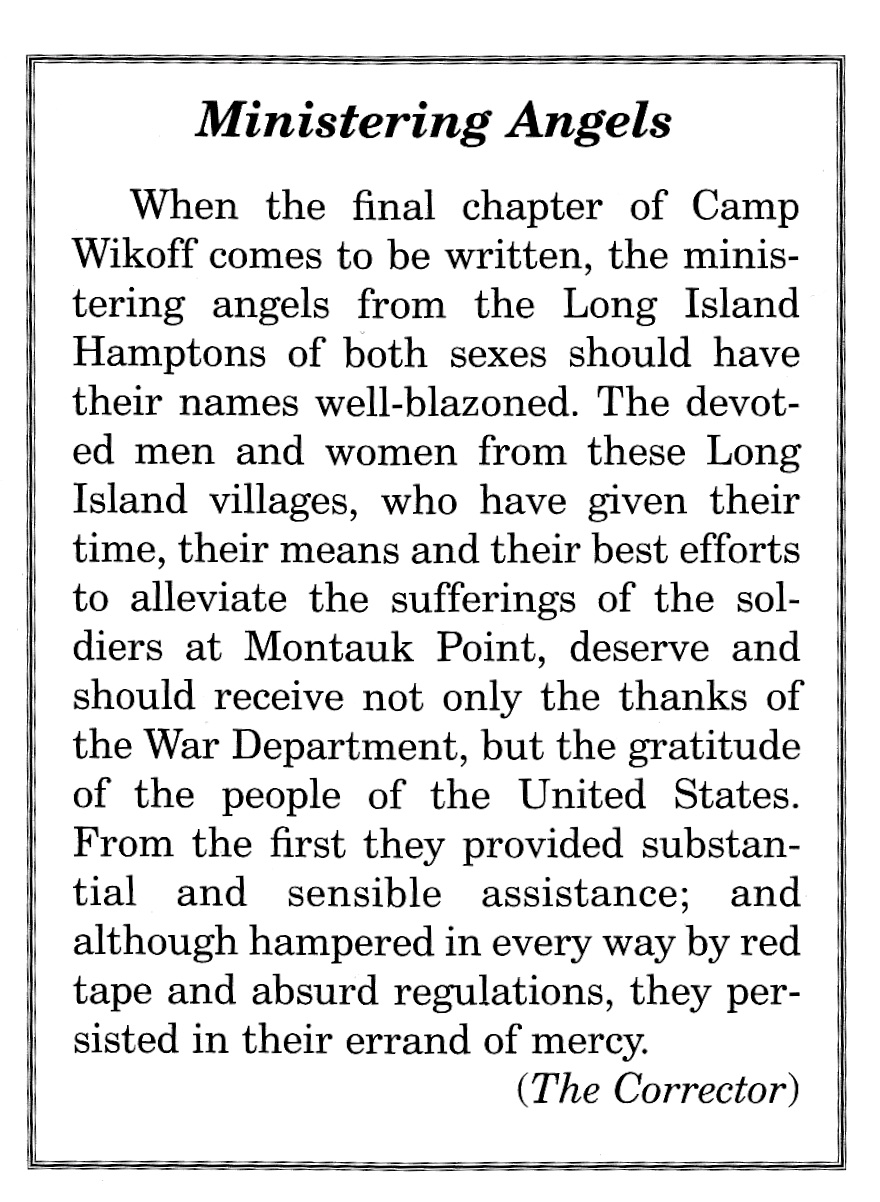
— September 17, 1898.
———————————————-
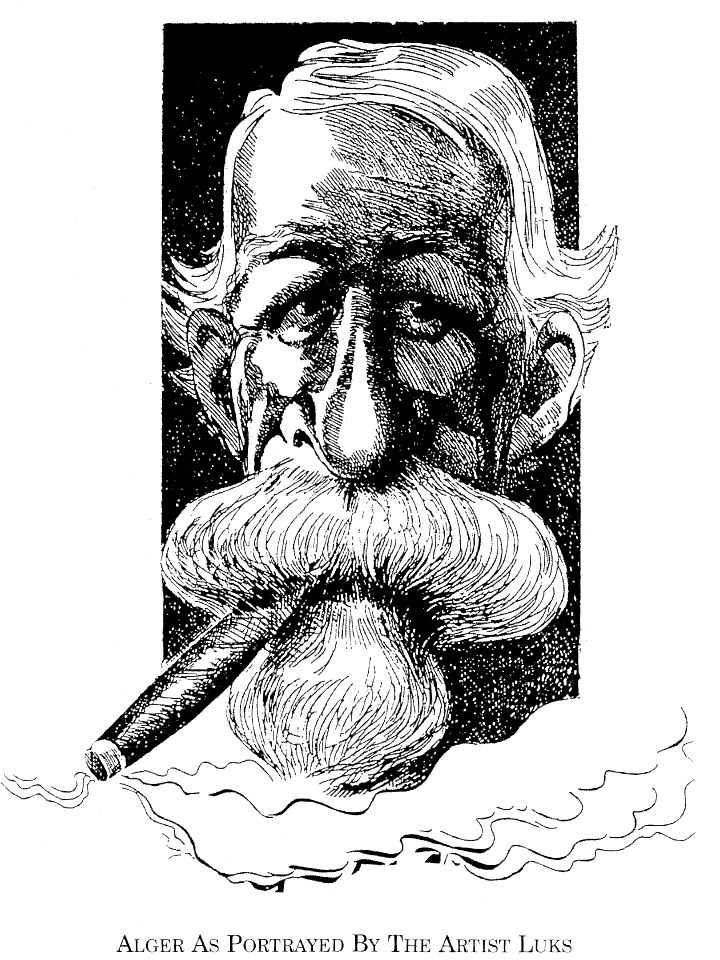
— The World, September 18, 1898.
———————————————-
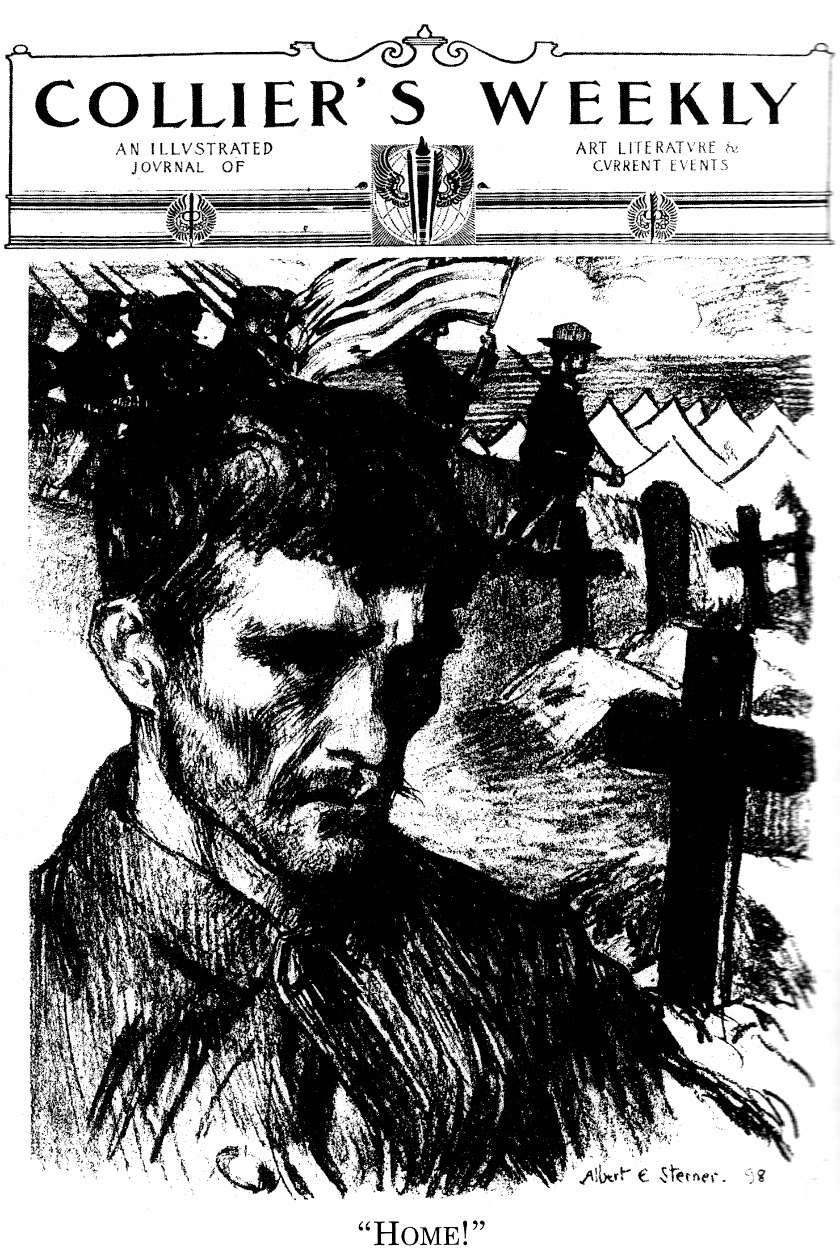
— Albert Sterner, Illustrator, Collier’s Weekly, September 24, 1898.
———————————————-
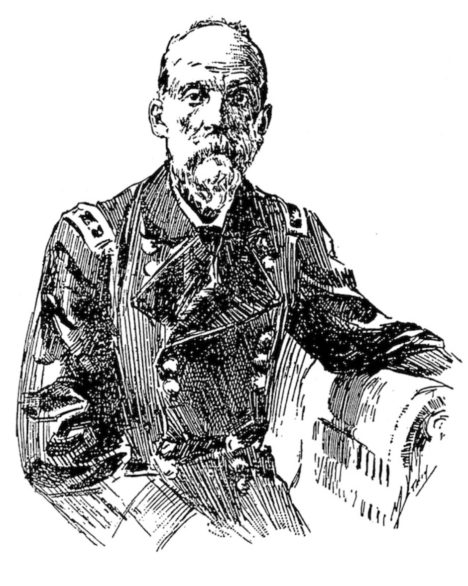
General Joseph Wheeler
— T.D. Boyce, Illustrator — New York Herald, September 8, 1898.
~~~~~~~~~~~~~~~
“An Ideal Camping Place”
”We have had there 22,500 men direct from the fever-invested swamps of Cuba, besides 7,000 men from southern camps in our own country. Ten thousand men have been cared for in the hospitals and only 263 of all this number have died. Many cases of yellow fever have been brought there and in not one instance has the disease been communicated.
“The camp was well laid out. The chief defect was a lack of nurses. I telegraphed left and right for these for these, however, and they were soon supplied by the Red Cross and kindred organizations. When Camp Wikoff was most populous, there were twenty-eight square miles of tents, and the scene presented was most beautiful.”
— General Joseph Wheeler, New York Times, September 27, 1898.
———————————————-
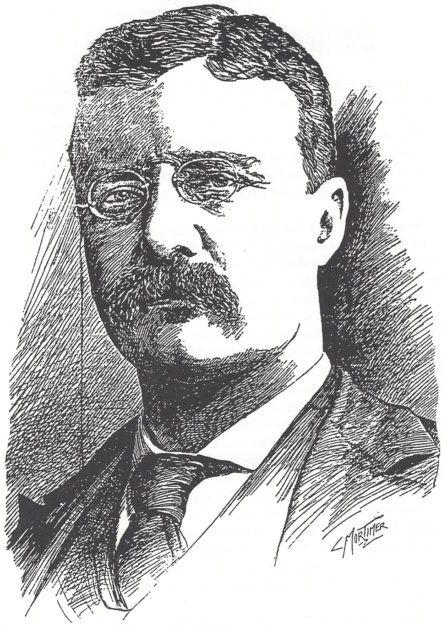
How Roosevelt Swept The Field
————————
Famed orator Chauncey M. Depew,
Nominating Theodore Roosevelt,
Republican Convention in Saratoga:
“For this year, for this crisis, for the voters of the Empire State, for the
young men of the country and the upward, onward and outward trend
of the United States, the candidate of candidates is the hero of Santiago, the
Idol of the Rough Riders – Col. Theodore Roosevelt.”
Republican NYS Gubernatorial Convention, Saratoga, NY, Tuesday, September 27, 1898.
— Commercial Advertiser, Sept 28, 1898.
———————————————-
Roosevelt Fires First Campaign Gun
Carnegie Hall, NYC, October 5, 1898
….
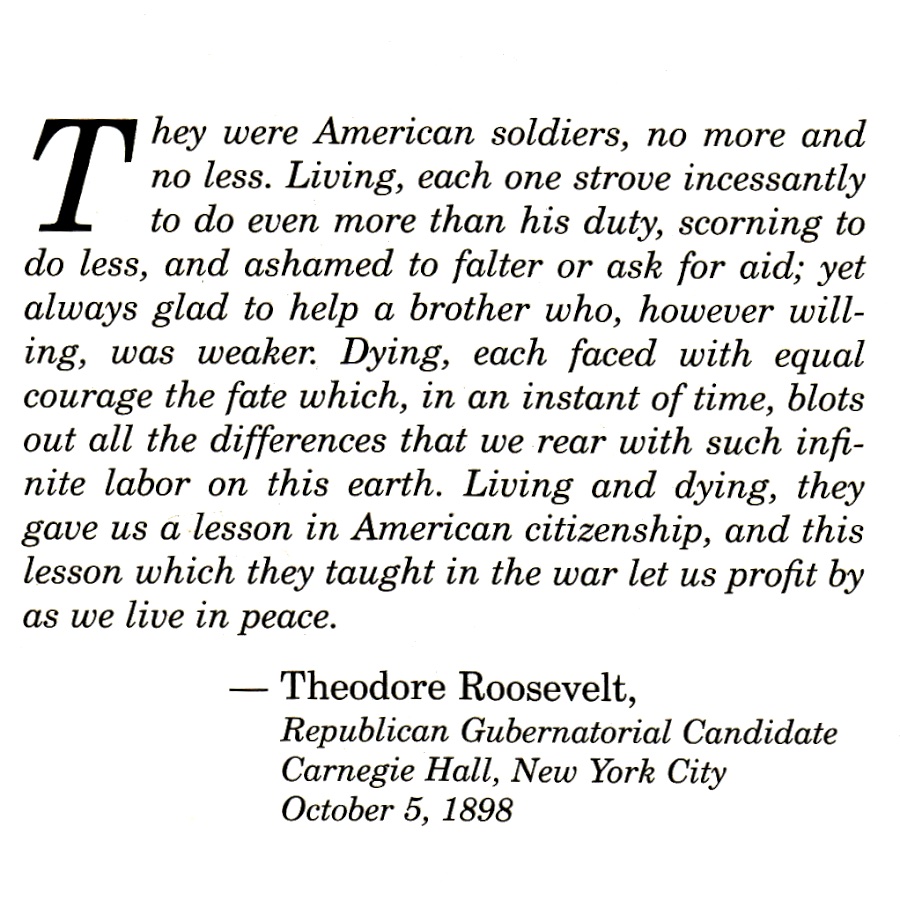
… from Republican NYS Gubernatorial Candidate Theodore Roosevelt’s
first campaign speech.
— New York Press.
———————————————-

— John H. Hunt, Sag Harbor Express, October 6, 1898.
———————————————-
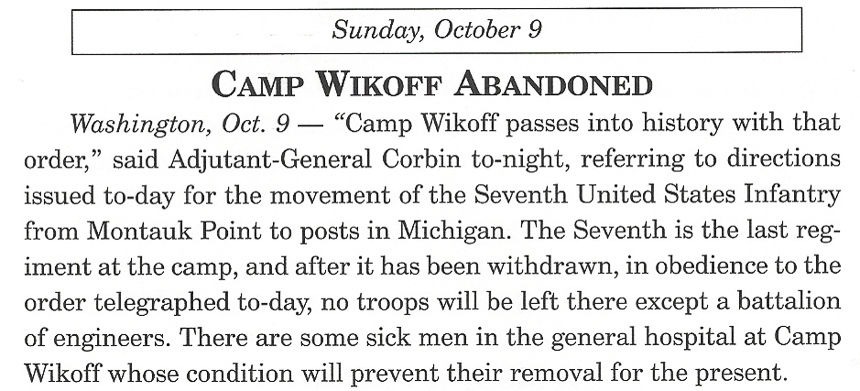
— The Sun.
———————————————-
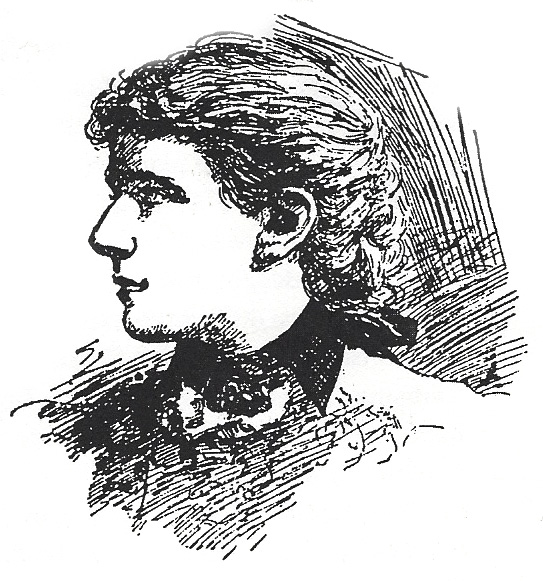
Reubina Hyde Walworth, Heroic Nurse
When Camp Wikoff became a vast pest hole, Miss Walworth’s devoted sacrifice shone brightest. For a time she helped her mother in the General Hospital and there rendered invaluable service. But when she told her mother that she had volunteered for service in the isolation tents of the Detention Hospital, with its scores of fever-stricken, gaunt and war-worn men, her mother tried her utmost to dissuade her from the sacrifice…Miss Walworth refused to leave her post until the last patient had gone his way. Then she told her mother that she, too, was ill…. Miss Walworth’s illness developed into typhoid fever in its malignant form….She died at the Presbyterian Hospital, NYC, on October 18, 1898.
— Illustration, New York Press – Report, The World, October 19, 1898.
———————————————-
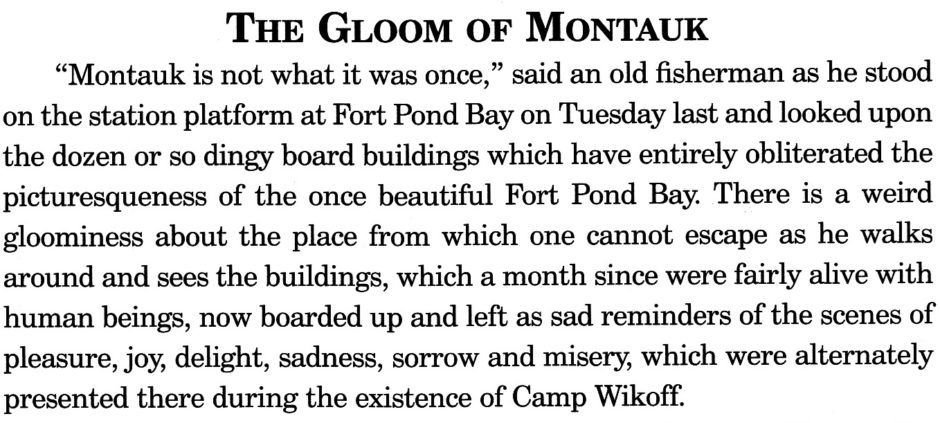
— E.S. Boughton, Editor, East Hampton Star, October 29, 1898.
———————————————-

— New York Tribune.
———————————————-
REPORT of the WAR COMMISSION

— New York Times, February 13, 1899 — Flag, Chicago Tribune.
~~~~~~~~~~~~~~~~~~~~~~~~~~~~~~~~~~~~~~~~~~~~~~~~~~~
Adapted from 2018 Winter Lecture Series Presentation at Clinton Academy:
Fever in Montauk:
Camp Wikoff & The East Hampton Community
Newsday, April 5, 2020, LI Life Feature
‘Confronting a Crisis:
How Long Island United to Fight an Epidemic in 1898′
by John Hanc
For a pdf of this Feature, please send request to info@aaqeastend.com.
———–Courtesy of Newsday
For further information on Camp Wikoff, please visit:
BULLY! Colonel Theodore Roosevelt, The Rough Riders & Camp Wikoff, Montauk, New York — 1898. A Newspaper Chronicle w/ Roosevelt’s Letters. Edited by Jeff Heatley. Published by the Montauk Historical Society & Pushcart Press, 1998.


